The Universal Platform for Unlimited Digital Transformation



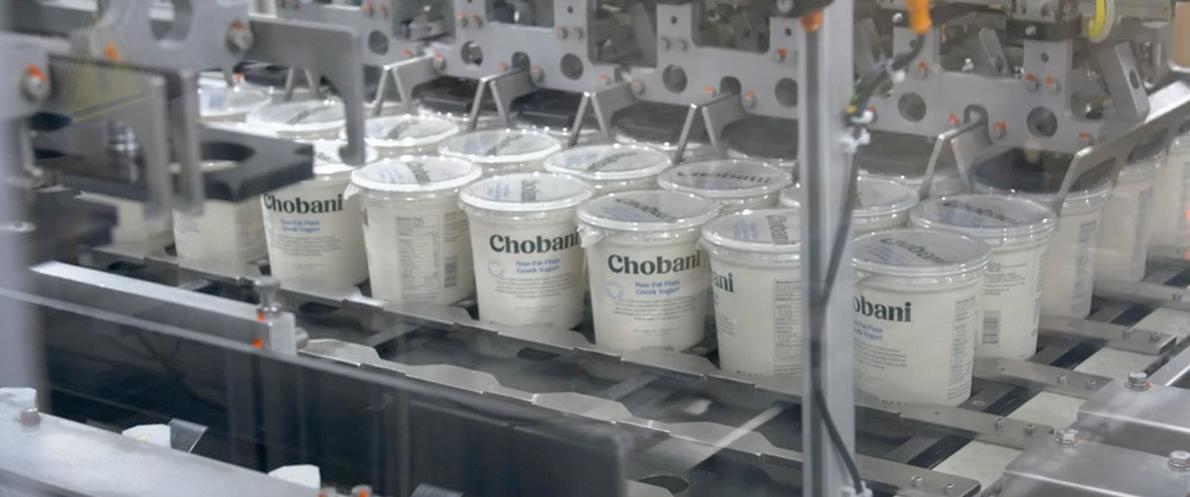










Unlimited
Add as many devices, clients, tags, and users as you need — no extra cost. Ignition’s flat rate keeps you on budget.

Universal
No matter what OS or IT



device is being used, Ignition will run on it

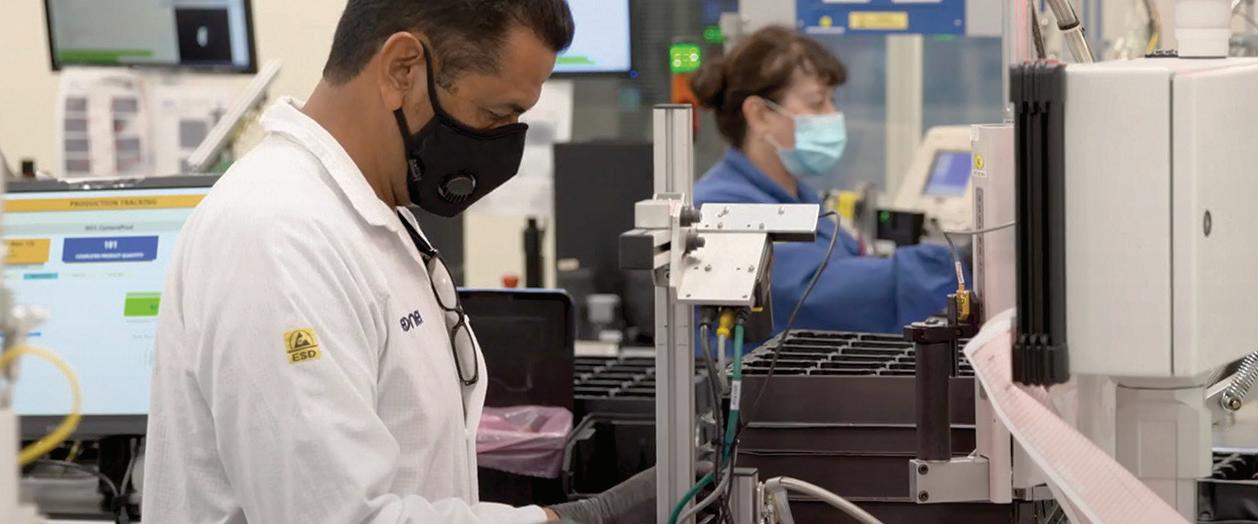
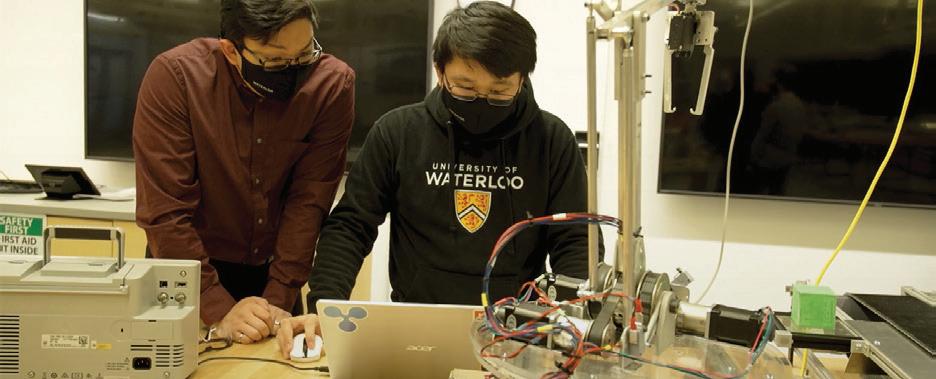
Learn more at
All-In-One
Ignition is an ambidextrous tool that can aggregate data, build applications & instantly web-deploy clients, all from one login.












ia.io/digitaltransformation
structure or interface
smoothly & efficiently. October 2022
The Plant Floor in Your Pocket


your SCADA with a swipe.












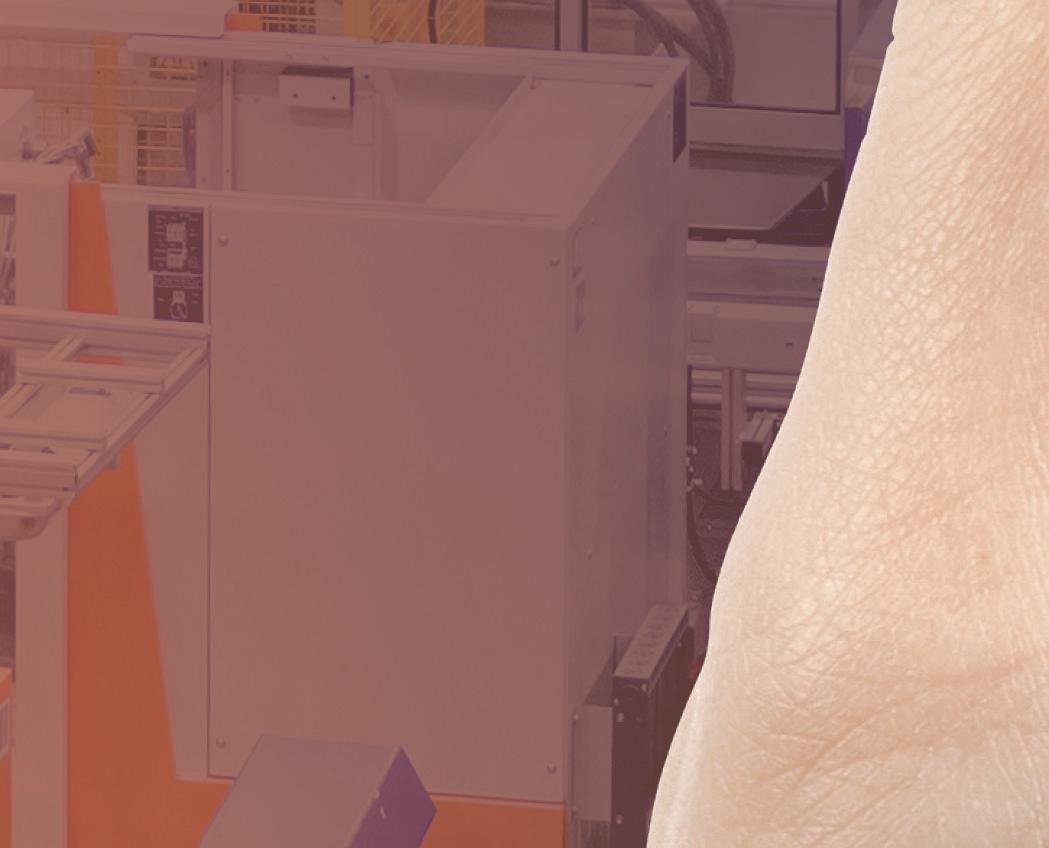





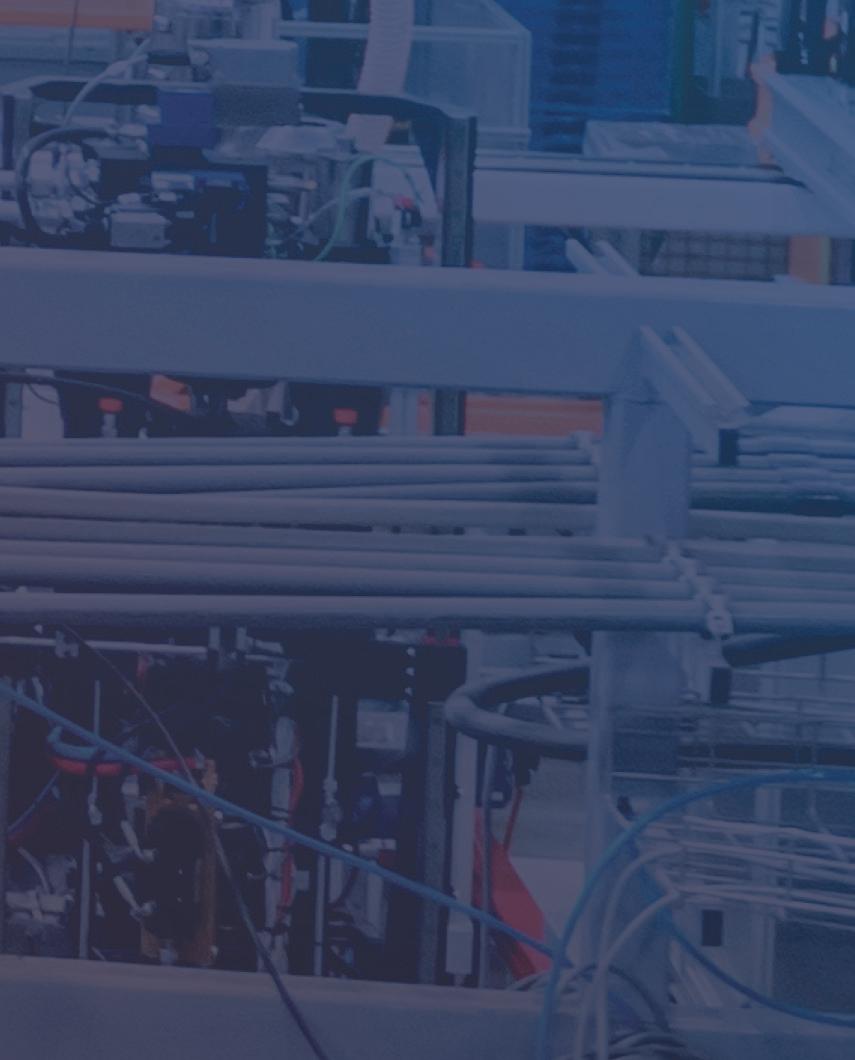






See the live demo now.








phone






Get an overview of your process at a glance.
Control
Scan this QR code with your
demo.ia.io/automationor visit







3 Big Industrial Networking Developments Wearable Safety in the Warehouse Peer-to-Peer FAQ: Big Data Robots Ensure Zero-Defect Tire Pressure Sensor Assembly Top Sustainability Trends in Manufacturing New Products 06 08 30 35 42 37 24 THE INTELLIGENT WAREHOUSE OCTOBER 2022 / www.AutomationWorld.com





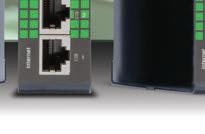






































StrideLinx VPN Routers starting at $385.00 (SE-SL3001) 'RQ
W�OHW�D�VLPSOH�VXSSRUW�FDOO EHFRPH�D�FRVWO\�VLWH�YLVLW Research, price, buy at: www.automationdirect.com/stridelinx With StrideLinx remote access you can securely connect with remote systems in an instant, troubleshooting and correcting issues without the hassles, delays and costs of traveling. StrideLinx VPN routers provide 10GB of FREE monthly bandwidth to securely monitor, program and/or troubleshoot your remote systems. Optional services are available to maximize your remote access capabilities, including: • Cloud-based Data Logging - Unlimited cloud data storage for up to 7 years with active subscription • Cloud Notify/Alarming - provides customized “alarm” email and push notifications when control limits are exceeded on HMI / PLC devices connected to the StrideLinx VPN router • White Labeling allows users to re-brand the platform, mobile app and hardware Linx the #1 value in automation Order Today, Ships Fast! * See our Web site for details and restrictions. © Copyright 2022 AutomationDirect, Cumming, GA USA. All rights reserved. 1-800-633-0405
The Intelligent Warehouse 24
Autonomous mobile robots, storage and retrieval systems, and scheduling tools get an artificial intelligence boost to improve material movement e ciencies and keep workers safe.
Peer-to-Peer FAQ: Big Data 30
In this research project, Automation World highlights the technologies that comprise industrial Big Data and showcase insights from your end user peers and system integrators about how they’re using these technologies to improve decision-making around business and production operations.
Robots Ensure Zero-Defect Tire Pressure Sensor Assembly
MMS Modular Molding Systems created a system using Stäubli robots to fully automate a tire pressure sensor assembly capable of producing a complete sensor every six seconds.
EDITORIAL
David Greenfield Director of Content/Editor-in-Chief dgreenfield@automationworld.com / 678 662 3322
Stephanie Neil Senior Editor sneil@automationworld.com / 781 378 1652
Victoria Sanchez Managing Editor vsanchez@pmmimediagroup.com / 571-612-3200 x9298
Mike Prokopeak Senior Director, Content & Brand Growth James R. Koelsch, Lauren Paul, Jeanne Schweder and Beth Stackpole Contributing Writers
ART & PRODUCTION
Filippo Riello Marketing & Digital Publishing Art Director friello@pmmimediagroup.com / 312 222 1010 x1200
George Shurtle Ad Services & Production Manager gshurtleff@pmmimediagroup.com / 312 222 1010 x1170
ADVERTISING
Kurt Belisle Publisher kbelisle@pmmimediagroup.com / 815 549 1034
West Coast
Jim Powers Regional Manager jpowers@automationworld.com / 312 925 7793 Midwest, Southwest, and East Coast Kelly Greeby Senior Director, Client Success & Media Operations Alicia Pettigrew Director, Product Strategy
AUDIENCE & DIGITAL
Elizabeth Kachoris Senior Director, Digital & Data Jen Krepelka Director, Websites + UX/UI
PMMI MEDIA GROUP
David Newcorn President, PMMI Media Group
Kurt Belisle Publisher kbelisle@pmmimediagroup.com / 815 549 1034
Reed Simonsis Brand Operations Manager rsimonsis@pmmimediagroup.com / 312 205 7919
Sharon Taylor Director of Marketing staylor@pmmimediagroup.com / 312 222 1010 x1710
and Rockwell Automation Expand Cybersecurity Protections with Dragos

Amber Miller Senior Marketing Manager amiller@pmmimediagroup.com / 312 222 1010 x1130
Janet Fabiano Financial Services Manager jfabiano@pmmimediagroup.com / 312 222 1010 x1330
All Automation World
including
Automation
3 OCTOBER 2022 | VOLUME 20 | NUMBER 10
AW OCTOBER 2022 CONTENTS
editorial is copyrighted by PMMI Media Group, Inc.
printed or electronic reproduction. Magazine and Web site editorial may not be reproduced in any form without thewritten permission of the publisher.
World | PMMI Media Group 401 N. Michigan Avenue, Suite 1700, Chicago, IL 60611 Phone: 312 222 1010 Fax: 312 222 1310 www.automationworld.com PMMI The Association for Packaging and Processing Technologies 12930 Worldgate Dr., Suite 200, Herndon VA, 20170 Phone: 571 612 3200 • Fax: 703 243 8556 www.pmmi.org ONLINE 4 FEATURES CASE STUDY 35 INDUSTRY DIRECTIONS 6 BATCH OF IDEAS 8 NEWS 18 PERSPECTIVES 10 NEW PRODUCTS 37 KEY INSIGHTS 46 Exclusive content from AutomationWorld.com: videos, podcasts, webinars, and more Automated Valve Choice Considerations Wearable Safety in the Warehouse Emerson
3 Big Industrial Networking Developments PMMI News Global Growth in Robotics Expected to Hit Major Milestone by 2024 PMMI Announces Fifth Annual On the Rise Awards Winners Automation Use Expected to Surge with Reshoring and Legislative Support Robot Vision System Options How Self-Service Analytics Aid Continuous Improvement 3 Steps for Secure, Reliable Wireless Mobile Robot Networks NEW PRODUCT SPOTLIGHT: Unmanaged Power Over Ethernet Switches Servo Drive Intelligent CAD Plug-in Photoelectric Sensors and more... INDUSTRY VIEW 42 Top Sustainability Trends in Manufacturing By Dick Slansky INTEGRATOR VIEW 43 IT/OT Convergence: More Than Just Connecting Networks By Luigi De Bernardini ENTERPRISE VIEW 44 Turbocharging Speed to Market By Brian R. May
PODCAST SERIES
How Does an Information Digital Twin Democratize Industrial Data?
Sean Gregerson, VP of asset management at Aveva, explains Information Digital Twins, data democratization and what it means for industrial use of operations data; and why the gap between collected data and analyzed data remains so large at most companies.
Peer-to-Peer FAQ: Cybersecurity













Explosive Robot Growth Expected, New DIY Robot Tech Emerges
Beckho introduces a new modular, customizable robot technology amid dramatic increases in robot use to address workforce, quality, and throughput issues.
AUTOMATION WORLD TV TECHNOLOGY MATTERS



The State of Big Data Collection and Analysis






















A look at key insights gathered recently from Automation World’s research into industry’s use of Big Data collection and analytics technologies.
AUTOMATION WORLD E-BOOK
Learn how to protect your company against bad cyber actors.
4 AW OCTOBER 2022 ONLINE
SYSTEM INTEGRATOR BLOGS • Rapidly Changing Market Demands Impact Industry • Migrate to Industry 4.0 with the Right Plan • 6 Common Automation Mistakes to Avoid • E ectively Training New Employees During a Labor Shortage • An Alternative to On-Site Service Technicians







 By David Greenfield
By David Greenfield
Automated Valve Choice Considerations

mately, with a control valve, you’re trying to size and select a valve that has a characteristic that allows the system to be linear with an installed gain of .5 to 2,” Turbiville said.
Like so many of the core technologies integral to automated industrial operations— such as motors, drives, and I/O—valves don’t always receive the attention they deserve in the automation arena. Despite this, their functionality is no less critical to the safe and effective control of fluid movement. Also, as basic as valves may seem, the technology surrounding them has not remained static.
To help answer a reader question about how to select the right valve for an application, we connected with Ross Turbiville of Emerson Automation Solutions for a recent episode of the “Automation World Gets Your Questions Answered” podcast series. In this podcast we discussed the different types of commonly available automated valves; how to determine valve sizing and performance based on flow, pressure, and temperature characteristics of the fluid to be controlled; the impact of piping systems on valve choice; and the effect a valve’s construction materials can have on its performance.
Valve type, size, performance
Our discussion began by looking at the different types of commonly available automated valves based on their function and how the media to be controlled by the valve impacts a user’s selection decision.
Turbiville noted two major valve type distinctions: 1) automated on/off valves; and 2) automated control valves. He noted that, when considering automated control valves, end users should be sure to consider the kind of control resolution they’ll need for the application. “Ulti-
With regard to valve sizing and performance based on flow, pressure, and temperature characteristics of the media moving through the piping system, Turbiville explained that, first and foremost, users need to consider this from a safety perspective. More specifically, he said users should carefully consider the valve’s “material capability from a corrosion/erosion perspective with the media that you’re flowing…[as well as] the pressure and temperature limitations of a given material to ensure that the material and the pressure class rating you select for the valve meets code requirements.”
Piping considerations
Explaining how the type of piping system used can impact valve choice, Turbiville noted that when considering a control valve, realize that the capacity of the valve is dictated by IEC 60534-2-3. This standard “defines the number of straight runs of pipe upstream and downstream of the valves, as well as sensor locations to allow measuring the capacity of the valve in a lab environment. Any time you get into a potential piping system that is compressed, there is also a risk the capacity of the valve could be different than the published values. [That’s why] it’s also good to realize that, with the published values, the standards allow a margin of error in the capacity dictated by the industry codes. When looking at a piping system, understand what the piping system looks like, and then consult with your valve vendor if you have a very tight piping system to understand the impacts.”
Electric, pneumatic,or hydraulic
To help users navigate their valve choice among electric, pneumatic, or hydraulic valves to determine which one is the best fit for their operation, Turbiville said there are two ways to approach this determination.
“First and foremost, look at it from a perfor-



mance perspective—how quickly a valve needs to respond to process changes. Whether it’s a control valve or an on/off valve, make sure the process is addressed [by the valve in] the way it’s intended in the design.”
If you need quicker response to a process change or command, Turbiville recommends looking at pneumatic or hydraulic operating valves. In applications where response time is less critical, he said valves with electric actuation can be considered.
Beyond deciding among electric, pneumatic, and hydraulic valve types, Turbiville stressed careful consideration of the valve’s cost. From a pure cost perspective, hydraulic actuators are typically the most expensive, followed by electric actuators, said Turbiville, with the most economical actuators being pneumatic.
Turbiville noted that, when considering the cost of a valve, user should look beyond the vendor price and evaluate overall cost impacts, such as maintenance and environmental safety and health considerations. You also need to look at what emissions could look like, depending on the media being handled.
“In the upstream oil and gas world, if you’re using gas to drive a pneumatic actuator, that may make less sense with changing regulations, [leading you to] go electric. Hydraulics can provide extremely high-resolution control as they can move very quickly. But they also have an oil reservoir that needs to be considered,” he said.
Editor-In-Chief/ Director of Content dgreenfield@automationworld.com
INDUSTRY DIRECTIONS 6 AW OCTOBER 2022 EDITORIAL
Hear the complete valve choice podcast discussion with Emerson’s Ross Turbiville
ON-DEMAND




ACCESS
CONTENT TODAY If you missed PACK EXPO International in Chicago or didn’t see everything while you were there, don’t worry! Content is still available on demand through November 30, 2022. Discover innovative solutions for packaging and processing, automation, sustainability, e-commerce and more. LEARN MORE & ACCESS NOW TO LEARN MORE ABOUT UPCOMING EVENTS, VISIT PACKEXPO.COM. This access is offered 24/7 from the comfort of your computer. YOUR ON-DEMAND EXPERIENCE INCLUDES: • Educational Sessions • Exhibitor Online Showrooms • Videos from the Show Floor
BATCH OF IDEAS
Wearable Safety in the Warehouse
By Stephanie Neil Senior Editor
sneil@automationworld.com
vidual’s shoulder blades, it collects data measuring a variety of inputs at a rate of 12.5 times per second and analyzes all the moves of the wearer’s torso. That information provides real-time alerts to the wearer—which Petterson calls the “industrial athlete”—to tell them when they are doing something that could compromise their safety.
This past August, the U.S. Department of Labor’s Occupational Safety and Health Administration (OSHA) launched an initiative aimed at protecting workers in warehousing, storage, and distribution facilities who are at more risk of injury as a result of an increase in e-commerce. This regional five-year initiative will focus on the hazardous conditions workers face every day.
The program follows a Bureau of Labor Statistics’ (BLS) 2020 finding that the injury rate for workers in warehousing and storage is higher than the U.S. average among all private industries. In addition, from 2017 to 2020, BLS reported 93 work-related fatalities nationally in the industry.
That’s just not okay. And nobody understands how devastating these numbers are more than Sean Petterson, whose father passed away while on a construction job.
It was that experience that prompted Petterson to study industrial design and engineering to find ways stop injuries and fatalities in industrial settings. He started by developing exoskeletons to strengthen human capabilities, building an algorithm for kinematic movement. But the exoskeleton model was limited to specific applications, so Petterson pivoted to create wearables that can predict the potential of injuries, ultimately resulted in something more sustainable and datadriven than exoskeletons.
Petterson’s company, StrongArm Technologies, delivers IoT safety wearables designed to prevent injuries before they happen. Consisting of a sensor that sits on a hip clip or strapped between an indi-
It calculates the most common predictors of injury, such as twisting velocity, and other factors that weigh into a safety score. If the worker enters into an unsafe range of movement, the sensor will send a vibrational or light-based alert that prompts the person to modify behavior. “If there are too many unsafe movements, the safety score begins to drop and if it drops below a threshold, [the system] gives feedback, like a tap on the shoulder [urging them] to rethink things before completing the task.”
When the wearer returns the sensor to StrongArm’s SafetyWork system dock, the information is sent to a cloud-based platform providing managers with actionable insights over time. Logged events are mapped each day and a proprietary algorithm populates the dashboard for individualized safety metrics, customized reports, and industry benchmarks. Taken together, these insights enable proactive intervention and facility-wide risk engineering.
“We are not trying to engineer around something but, rather, create a baseline to engineer out all of the risks,” Petterson said. “It was complicated to get here, but in practice we’ve made it simple.”
The SafetyWork system processes the data into profiles so industrial athletes can see where they can improve. But it also gives managers actionable insight to do predictive injury analysis and correlate how a change in safety score may result in injury, giving them information to adjust the work environment for improvement. For example, if someone’s safety score drops, the manager can identify underlying causes. Perhaps they need training, or they’ve worked too many shifts and need a break. “Most injuries happen over time and get worse with indicators, so we are finding the way movement leads to early indicators to be ahead of the curve before an injury happens,” Petterson explained.
According to Petterson, it’s a call to action. And

it pays off, especially in the current environment of high employee turnover. Many companies operate on pay incentive, offering a bonus for every unit fulfilled above the 100% threshold. But overworking employees in the warehouse often leads to injuries which results in added costs to the company. “We found you can incentivize up to 2%, but anything over that there is so much risk that the ROI is backwards.” And employees often respond favorably to companies that encourage them to go home when they are done with their shift. “You can retain about 50% of the workforce just by keeping them safe.”
And let’s not forget that the government is watching. OSHA’s Regional Emphasis Program for Warehousing Operations is currently focusing on employers in Pennsylvania, Delaware, the District of Columbia, and West Virginia, and it will include on-site inspections that will hold employers accountable for providing a safe environment. StrongArm Technologies offers a way to mitigate risk, making worker safety a priority.
8 AW OCTOBER 2022 EDITORIAL
The SafetyWork system processes the data into profiles so workers can see where they can improve. But it also gives managers actionable insight to do predictive injury analysis and correlate how a change in safety score may result in injury.
PMMI Media Group Custom Research can help! We offer: •Brand & Competitive Analysis •Value Proposition & Product Development Insights •Thought Leadership Research Need to know the trends to guide future go-to-market strategies? Looking to develop new products? Want to know where you t into the competitive landscape? Learn more about custom research for the packaging and processing industry! pmmimediagroup.com/custom-research Questions? Contact:Jorge Izquierdo, vice president, Market Development, PMMI jizquierdo@pmmi.org | 571.612.3199
Automation Use Expected to Surge with Reshoring and Legislative Support
By David Greenfield Editor-in-Chief, Director of Content
U.S. manufacturing reshoring initiatives gained steam several years ago as overseas shipping and labor costs began to eat into the healthy margins once commonly associated with o shore manufacturing. Even in the face of such negative financial impacts, however, reshoring e orts were limited and evidence did not indicate widespread reshoring actions.
Then came COVID-19 and the realization that about half of the world’s disposable masks were pro duced in China. For many, this proved to be a broadbased and easily understood reason for reducing o shore manufacturing operations. On top of that are the ongoing supply chain impacts caused by over seas manufacturing slowdowns, shipping delays, and issues with unloading goods at ports due to COVID and other, often associated, e ects.
Amid these supply chain disruptions, we’re beginning to see more solid evidence of reshoring plans that will likely increase even further with the recent passage of the CHIPS and Science Act.
Automation and robotics research
ABB recently conducted a study based on responses from 1,610 executives in the U.S. and Europe regarding their planned use of various automation technologies. Their study revealed that 70% of U.S. businesses are planning changes in their operations, with 37% planning to bring production back home and 33% looking to nearshore and shift their operations to a closer location.
Sami Atiya, president of ABB’s Robotics & Discrete Automation Business, said industrial companies’ increasing need for flexibility and resilience in production is driving the interest in reshoring/nearshoring and, as a result, the demand for more automation. In particular, he noted the role of robotics in facilitating reshoring or nearshoring e orts, both to address supply chain concerns and maintain the global competitiveness of U.S. businesses.
According to the ABB study, American companies are relying more on automation to solve supply chain issues, with 43% of respondents saying they are expanding their use of robotics and automation specifically to address supply chain and customer demand issues.
In its report, ABB noted that automation and ro botics technologies, which have long been associated with use in the automotive industry, have now signifi cantly expanded across multiple industries, including logistics, food and beverage, retail, and healthcare.
Robotics use spreads
Research by PMMI, Automation World’s parent organization, backs up ABB’s assertion about the spread of robotics beyond the automotive industry, with data showing 84% of consumer-packaged goods companies now use robots somewhere on their production lines. PMMI says this number is expected to rise to 93% in the next five years. Respondents to PMMI’s research study say improvements in robot functionality, such as vision, self-learning, and artificial intelligence are spurring manufacturers to purchase and use more robots in processing and packaging applications.


Looking across all manufacturing and processing industry sectors, recent research conducted by Automation World shows similar high growth trends for robots. In Automation World’s research, 83% of respondents said they are looking to add
robots in the next two years. Helping drive this figure is the fact that 29% of respondents currently don’t use any robots at all, and only 12% note that more than 50% of their production operations involve the use of robots.
According to the International Federation of Robotics, the increase in robot density per 10,000 workers in North America, jumped 28% in Q1 2022 compared to first quarter of 2021, the highest rate of growth recorded by the federation.
This trend is not isolated to the U.S. ABB reports a greater near-term demand for robotics in Europe, where 74% of European businesses indicate they will invest in robotics and automation in the next three years, compared to 62% in the U.S.
Legislative support
With the CHIPS and Science Act now signed into law by President Joe Biden, the U.S. is expected to see significant reshoring e orts around semiconduc tor manufacturing considering the $39 billion slated to be spent on expanding this industry domestically over the next five years. A new 25% tax credit for companies investing in semiconductor manufactur

10 AW OCTOBER 2022 PERSPECTIVES
President Biden signs CHIPS and Science Act.
ing equipment or the construction of manufacturing facilities is also included in the legislation.

As with the face mask issue highlighted during COVID, the chip shortage encountered during the peak of COVID underscored the need for reshoring or near shoring of semiconductor manufacturing. That industry largely moved to Asia in the 1980s and 1990s. Funding from the CHIPS and Science Act is expected to incentivize the return of semiconductor manufacturing to the U.S. to help prevent future supply chain disruptions.


According to The White House, “Spurred by the passage of the CHIPS and Science Act of 2022, companies have announced nearly $50 billion in additional investments in American semiconductor manufacturing.”
Two examples cited by The White House include:
• Micron’s $40 billion investment in memory chip manufacturing, which will create up to 40,000 new jobs in construction and manufacturing. “This investment alone will bring the U.S. market share of memory chip production from less than 2% to up to 10% over the next decade,” says The White House.
• Qualcomm and GlobalFoundries have formed








a new partnership that includes $4.2 billion to manufacture chips in an expansion of GlobalFoundries’ upstate New York facility. Qualcomm has also announced plans to increase semiconductor production in the U.S. by up to 50% over the next five years.
A few weeks after passage of the CHIPS and Science Act, First Solar announced plans to spend “as much as $1.2 billion to boost its manufacturing capacity” in the U.S. by around 75%, according to The Wall Street Journal. In its article on First Solar’s decision, The Wall Street Journal reported: First Solar Chief Executive Mark Widmar said, until recently the company had been eager to boost its manufacturing footprint, but high costs and a lack of policy support meant it was considering adding capacity in Europe or India rather than at home [in the U.S.].
“With the new investments, First Solar now expects to have around 10.6 gigawatts of panel-making capacity in the U.S. by 2025—up from an expected 6 gigawatts next year.”
For over 90 years, Telemecanique Sensors has developed quality sensor products, helping engineers ensure their machines are safe; meeting all the applicable safety standards. Who, then, should you trust for all your safety sensor solutions?




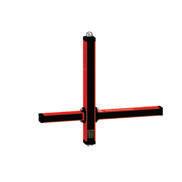

11 AW OCTOBER 2022 PERSPECTIVES
...because just ONE workplace accident is too many...
www.tesensors.com/Safety (product images not to scale)
XCSR RFID Safety Sensor & XUSL4M Light Curtains with muting for automated machine shutdown, XCSLF switch for entry prevention, & XY2CED Double-sided Cable Pull Switch for fast emergency manual shutdown.
Simply
easy!
Read more about the automation, supply chain, reshoring connection.
Learn more about the role of automation in reshoring initiatives.
Robot Vision System Options
By David Greenfield Editor-in-Chief, Director of Content
One of the first real-world applications of IoT (Internet of Things) technologies that provided tangible benefits to manufacturers of all sizes involved optimizing equipment maintenance via the addition of sensors to gather more data. Similarly, the addition of vision systems to robots is rapidly advancing the use of robots beyond their initial areas of application.
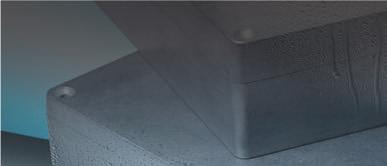
But understanding how vision technologies can expand robot capabilities is just one important as pect of this automation technology combination. Two other factors are: How to determine if you real ly need robot vision technologies and how to choose the right kind of camera for your system if you do.
In any consideration of vision system technology, the first thing to understand is how much easier the incorporation of vision technologies into robotic systems has become. Not so long ago, vision systems were often viewed as being complex, expensive, and di cult to integrate. However, several new vision technologies have emerged in the past few years that are notable for their reduced cost factors and ease of integration and use, especially for cobot (collaborative robot) applications.
Why add vision to robots?
If you’ve ever been to an industry trade show featuring robots, you know that robots can work very
e ectively without vision capabilities. However, if you need a robot to be able to pick and place different objects or handle objects in di erent orientations, the addition of vision technology is critical.

In such scenarios, OnRobot (a supplier of cobot systems, end e ector tools, sensors, and software) recommends the addition of a camera and associated software to your production lines. According to the company, vision systems can bring “flexibility to your operations, enabling you to switch between di erent products easily. And vision dramatically reduces the time required to move between one product and another.”
But with so many di erent types of robot vi-

12 AW OCTOBER 2022 PERSPECTIVES
sion systems on the markets, how do you determine which one is right for your application?



























Understanding camera types
According to OnRobot, robot cameras are most commonly 2D, 3D or 2.5D.



Though 2D cameras are the cheapest of the three types, OnRobot notes that they are reliable, but also the least versatile. “Typically, 2D cameras determine length and width (X and Y axis), but are unable to determine height, which limits the number of applications they can support,” says OnRobot.


3D cameras provide all the visual information a robot could possibly need, covering all three axes and incorporating object rotation. OnRobot notes that this functionality does, of course, come with a higher price tag. The company adds that 3D vision systems can also be more di cult to integrate and operate than 2D or 2.5D cameras.
2.5D cameras occupy a space between 2D and 3D cameras, both in terms of cost and capabilities, say OnRobot. These cameras are capable of determining the height of objects, which can be useful in applications where items need to be stacked. They are also less expensive than 3D cameras while being

more capable than 2D cameras.






If a 2.5D camera seems appropriate for your application, OnRobot recommends exploring the set up and calibration requirements of the cameras you’re choosing among. “Some 2.5D cameras must be attached directly to your cobot, which restricts their capabilities,” and some come with sub-optimal software.
Eyes is OnRobot’s 2.5D camera and vision system that can be used on most collaborative and light industrial robot arms.
According to OnRobot, Eyes can be mounted anywhere within the production cell rather than requiring integration into the robot arm or attached to the robot's wrist, as is required with some robot vision systems. This external mounting capability eliminates the issue of cables running alongside your robot, which can potentially restrict movement. The company says this external mounting option also allows users to “optimize cycle time, because Eyes can take care of image capture and processing while your robot is working on another operation. In addition, Eyes can be calibrated using just one picture.”
Hear from your industry peers about how they’re using machine vision and other sensor technologies, along with AI, to improve operations.




How can di erent types of robots be used to streamline processes and improve productivity.

13 AW OCTOBER 2022 PERSPECTIVES
How Self-Service Analytics Aid Continuous Improvement
By David Greenfield Editor-in-Chief, Director of Content
All the activity around Industry 4.0, the Industrial Internet of Things, and Digital Transformation is ultimately about one thing—analyzing large amounts of data to improve production and overall business operations. And while most discussions about Big Data and data analytics focus on overcoming obstacles associated with the aggregation and analysis of operations data, another challenge involves making the resulting ana lytics accessible and understandable to workers and management without the need for data scientists.
Self-service analytics (SSA) is designed to help businesses overcome this challenge.
According to technological research and consult ing firm Gartner: Self-service analytics is a form of business intelligence (BI) in which line-of-business professionals are enabled and encouraged to per form queries and generate reports on their own, with nominal IT support. Self-service analytics is often characterized by simple-to-use BI tools with basic analytic capabilities and an underlying data model that has been simplified or scaled down for ease of understanding and straightforward data access.”
Applying SSA forcontinuous improvement Lean Six Sigma is a common method employed by industrial manufacturing and processing companies for continuous improvement. Perhaps the biggest challenge in achieving success with Lean Six Sigma is getting everyone in the company actively involved in continuous improvement programs.
“Most companies have multiple ongoing projects, but generally there are only a handful of trained team members proficient enough in the required statistical methods for improvement projects,” says Nick Petrosyan, customer success manager at TrendMiner (a provider of web-based self-service analytics technology). “With few experts in this field, bottlenecks quickly arise. Additionally, many projects aim at addressing production performance issues, which require input from busy process and asset experts. As continuous improvement experts need to rely on subject matter experts (SMEs) for elaboration on process intricacies, many projects go unfinished or unaddressed due to these SME’s lim
ited availability for deep dive analysis.”
Petrosyan says these issues can be addressed when pre-work is completed by SMEs who can analyze the production data themselves and contribute to improvement projects or reduce the number of projects by finding improvements on their own.
“Allowing process and asset specialists to contribute to these projects dramatically increases the operational improvements needed to meet the expected organizational goals,” he says. “By fully leveraging captured time-series data and more e ciently utilizing the operation expertise of process experts, companies establish a cornerstone to maximize organizational continuous improvement.”
Following are two case study examples provided by TrendMiner that showcase how SSA technology is being used to aid industrial continuous improvement programs.
Huntsman Corp.
A global manufacturer of specialty chemicals, Hunts man Corporation has been using analysis of time-se ries data as a key aspect of its digital transformation.


Petroysan notes that Hunstman’s operational data was kept in separated silos, which added to the company’s challenge of improving operational excellence. Using SSA, Huntsman was able to overcome this challenge.
“For years, a Huntsman continuous isocyanate plant had been collecting and storing daily process and o ine-created lab analysis data in a historian database,” explains Petroysan. “In 2016, the company’s teams used self-service analytics to build soft sensors based on operating conditions to predict product quality for certain isocyanates. Process experts used these sensors to make micro-
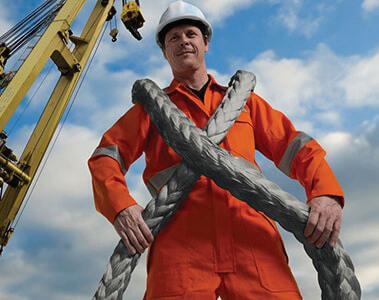
14 AW OCTOBER 2022 PERSPECTIVES
Lightweight ropes made with DyneemaXBO match or outperform the bending performance of specialty steel wire rope. Source: Dyneema
adjustments to process setpoints to pro-actively minimize impurity levels. For example, one of the monitors predicted o -spec hydrolysable chloride levels in the final product. By adjusting vacuum pressure conditions, product quality was ensured. In addition, monitors were set up to send out early warnings alerting operators not to load trucks, thus preventing o -spec material from going out to a customer.”
With the aid of SSA, Huntsman process experts established 24/7 quality control compared to quality control with lab analyses that had previously only been available during regular weekday work hours.
“With trucks being sent out seven days a week, the soft sensors eliminated 75% of the expensive o -spec transportation cases which occurred on the weekends,” says Petroysan. “As a result, a significant positive impact on lead time was achieved as unnecessary wait hours for in-spec product were eliminated, with the average lead time being reduced by several hours. Finally, the extra insights into product quality also reduced the demand on lab resources as the number of uncertain situations for this specific product was reduced by as much as 10%.”
DSM Dyneema
Dyneema is an ultra-high molecular weight polyethylene invented and manufactured by DSM Dyneema, which claims Dyneema is the world's strongest fiber.


Petrosyan says DSM Dyneema focuses on the use of Six Sigma and the DMAIC (define, measure, analyze, improve, control) cycle as their “go-to approach for improvement projects.” The company had set a target to increase the number of Six Sigma projects, with the average Six Sigma project duration being 5-6 months.
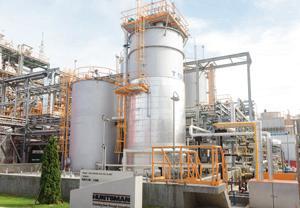
“By mapping the self-service industrial analytics functionalities to the different phases of the DMAIC cycle, it became clear that the tool could be applied to most of the phases and considerably reduce the time needed to complete each phase,” says Petroysan. “In a first test case, the define and measure phases were completed with self-service industrial analytics in two afternoons, instead of two weeks.”
Slide into Success
Whether
standard
Fabco-Air
linear slides
performance in many industrial applications, from packaging to medical imaging.







Choose from a wide range of standard units, which guarantee precise, repeatable operation and excellent load-handling capabilities.
can also modify units to deliver higher forces, faster speeds and longer
15 AW OCTOBER 2022 PERSPECTIVES www.fabco-air.com
you stay
or go custom — we’ve got you covered. MADE IN GAINESVILLE FLORIDA
pneumatic
combine reliability, robustness and a low-maintenance design for superior
We
strokes. Options include: • Many styles: single and dual bearing block, rodless and more • Anodized aluminum toolbars and bearing blocks • Stainless steel bearing materials • 9DULRXV�PRXQWLQJ�FRQą�JXUDWLRQV� • Many accessories and sensing options $QG��ZH�ZLOO�GHVLJQ��SURWRW\SH�DQG�GHOLYHU�FXVWRP�VROXWLRQV�WR�PHHW�\RXU�VSHFLą�F�DSSOLFDWLRQ�UHTXLUHPHQWV�
A member of Festo Group
FABCO-AIR
Huntsman Taiwan aromatic polyester polyols plant. Source: Huntsman
Learn how to make sense of the industrial analytics market.
3 Steps for Secure, Reliable Wireless Mobile Robot Networks
 By David Greenfield Editor-in-Chief, Director of Content
By David Greenfield Editor-in-Chief, Director of Content
In a recent research study about robotics use across industry, Automation World found that 100% of the integrators responding to the survey have seen an uptick in interest for AMRs (autonomous mobile robots) among their clients over the past five years. In terms of real-world application of AMRs, 22% of end users responding to the survey say they are looking to implement AMRs in the very near term.
If you’re unfamiliar with AMRs, they are robotic carts that can navigate through an environment without the need for human guidance to carry a variety of materials between locations. AMRs are frequently replacing automated guided vehicles (AGVs), which were commonly used to automate movement of materials in the past. An AGV navigates by following wire strips or magnetic tracks along the floor. In contrast AMRs use a sensor technology called light detection and ranging (LiDAR) instead.
To build reliable connectivity platforms for AMR operation in warehouses and factories, fast and stable wireless connectivity is a fundamental requirement. The biggest challenge can be in determining how to build the right kind of wireless communications network.
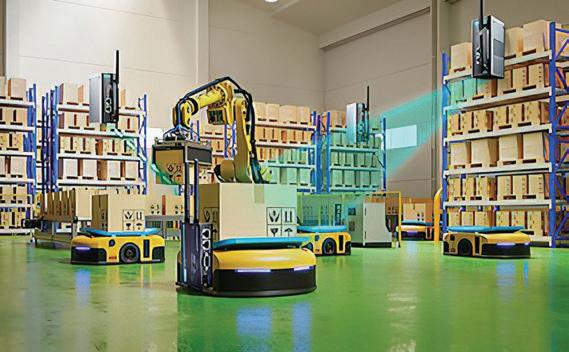
Moxa, a supplier of edge connectivity, industrial computing, and network infrastructure technologies, recommends following three key steps to build robust communication networks for AMRs. These steps are also recommended for development of communications for automated storage/ retrieval systems.
Step 1: Focus on industrial-grade designs
In any industrial application of wireless communication, electrical interference is an issue that must be addressed. This interference can stem from ground loops to the basic use of conveyor belts to
move products. Also, the constant vibration created when an AMR is moving can also a ect wireless performance.
Industrial-grade wireless products are commonly “reinforced with RF (radio frequency) and power isolation to protect the device against electrostatic discharge damage and sudden inrush currents generated by motors,” says Calvin Chuko, product manager at Moxa. “They also have a wider operating temperature range and feature high ingress protection to ensure that your wireless connections remain stable, even in environments with heavy ambient interference. Through these enhancements, industrial-grade devices are designed to last longer as well.”
Step 2: Deploy seamlesswireless connectivity
Wherever AMRs will be used, wireless roaming capability will be needed. According to Chuko, roam-
16 AW OCTOBER 2022 PERSPECTIVES
Su cient Wi-Fi coverage and roaming technology are needed to ensure seamless wireless connections. Source: Moxa
technology enables wireless clients to constantly search for and switch to the nearest access point with the strongest signal before the wireless connection is lost.


Wi-Fi coverage can also impact the quality of wireless connections because it “determines how quickly the wireless device can identify nearby access points and thus roam more reliably,” he says. “Opting for wireless devices with MIMO (multiple-input and multiple-output) capability can further multiply the capacity of a radio link to enlarge Wi-Fi coverage. This also improves wireless performance and eliminates the need to install additional access points.”
Chuko also recommends determining if the wireless communication device you’re considering can be equipped with millisecond-level roaming technology and evaluating the use of external antennas for more flexible network deployment to achieve broader Wi-Fi coverage.
“You can use wireless sni er tools within the area to trace various Wi-Fi spots to map out the actual profile of the radio coverage,” advises Chuko. “More often than not, you will need to finetune the network design after an on-site survey. Even when the Wi-Fi coverage is good and the RF
signal is strong, you may not get good throughput. Physical obstacles, such as walls, may be preventing some access points and clients from ‘hearing’ each other, leading to a collision of Wi-Fi signals.”
Step 3. Look for built-insecurity and managementsoftware
Chuko cautions that even basic Wi-Fi network management tasks can pose cybersecurity risks.
“For instance, if wireless clients can connect to access points without any authorization or authentication mechanism, this kind of unwarranted access may cause network breaches and even shut down the AMR system. That’s why we highly recommend securing all wireless communication devices after configuration and deny unauthorized devices access to the wireless network to create an additional layer of network security,” he says.
To ease the process of securing your wireless network, Chuko recommends focusing on networking technologies that feature management software to visualize the network environment and control the security of all node connections.
“Moxa has helped machine OEMs and system


integrators worldwide to augment AMR and automated storage/retrieval systems for optimal reliability and e ciency,” he adds. “Moxa’s AP (access point)/bridge/client solutions combine a rugged design with high-performance Wi-Fi connectivity to deliver secure and reliable wireless connectivity. And with Moxa MXview network management software and AeroMag technology, customers can easily configure, manage, maintain, and troubleshoot their network.”
Learn more about the use of robots, cobots, and AMRs in a Peer-to-Peer FAQ on the topic.
better products. better solutions.
Conveyor Solutions for All of Your Automation Needs

Belt Conveyors – Flat, Cleated & Plastic Modular

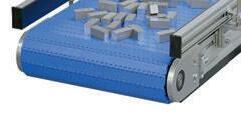
Timing Belt Conveyors
Roller Chain Conveyors
Roller Conveyors
Since
Up to 610 mm wide

For heavy

17 AW OCTOBER 2022 PERSPECTIVES
(860) 769-5500 info@mknorthamerica.com www.mknorthamerica.com
–
–
loads
– Straight & Curve
1988 we’ve been providing not only a better product, but also a better solution. Learn More Today! ing
Emerson and Rockwell Automation Expand Cybersecurity Protections with Dragos
By David Greenfield Director of Content, Automation World
As industrial companies of all sizes get serious about securing their enterprise and control system networks in the wake of increasing cyber-attacks, automation tech nology suppliers are partnering with recognized cybersecurity technology companies to bolster protection of their technologies in the field. Recently, Emerson and Rockwell Automation
made announcements about their partnership with Dragos Inc., a supplier of cybersecurity technology for industrial controls systems (ICS)/ operational technology (OT) environments. Dra gos says its OT Security Platform is designed to “provide visibility into assets and their vulnerabil ities, detect cyber threats to industrial systems, and enable efficient response through forensic investigation and OT-specific playbooks.”
An existing agreement between Emerson and Dragos involved the integration of Dragos’s threat detection technology into Emerson’s
Ovation automation platform and Power and Water Cybersecurity Suite.
The new agreement between the two compa nies validates use of the Dragos Platform within Emerson’s DeltaV distributed control system (DCS). According to Dragos and Emerson, the extended agreement between the two compa nies helps protect industrial control systems and operational technologies for power and water utilities, as well as oil and gas, chemical, petro chemical, food and beverage, pharmaceutical, pulp and paper, and metals and mining.
Rockwell Automation’s incident response retainer program. Source: Rockwell Automation

18 AW OCTOBER 2022 NEWS
Dragos notes that it is also incorporating DeltaV DCS platform-specific capabilities into the Dragos platform, including protocol dissectors, asset characterizations, threat behavior analytics, and investigation playbooks to expand Emerson’s cybersecurity assessment capabilities and enhance threat detection and response for process industries.
Incident response
Rockwell Automation’s work with Dragos involves use of dedicated ICS incident responders from Dragos as part of Rockwell’s incident response retainer program. According to Rockwell, this program is designed to help industrial companies develop an action plan using proven methods to contain the incident and minimize damage. Rockwell notes that its back-up and recovery services, which are part of this program, keep near real-
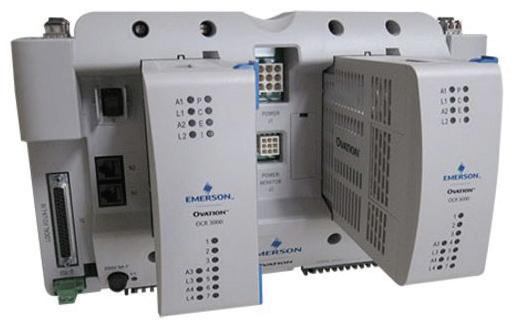
time records of production and application data, allowing businesses to recover quickly and return to production. “Following system recovery, our industrial security services team also investigates the incident to help identify root causes and strengthen your resilience,” Rockwell says.
Matt Cowell, vice president of business development at Dragos, says, “By growing our agreement and bringing industrial cybersecurity to an even wider group of industries, we are able to reach and protect a wider array of organizations, many of whom are just embarking on the path of digital transformation and have immediate needs to reduce risk as they expand connectivity.”
Other Dragos partners in the industrial space include: Amazon Web Services, Deloitte, Fortinet, GE, Juniper Networks, Schweitzer Engineering Laboratories, Splunk, IBM Security, ServiceNow, OSISoft (now part of Aveva), ISA



19 AW OCTOBER 2022 NEWS
Global Security Alliance, Waterfall Security Solutions, Owl Data Diode, and MxD.
Listen to this podcast about determining how much cybersecurity protection you need.
Emerson's Ovation controller. Source: Emerson
3 Big Industrial Networking Developments
By David Greenfield
of Content,
Notable advances in industrial network ing technology are not rare, but they usually arrive one at a time. Occa sionally, however, we see a cluster of new developments, as we did in late 2018 when the OPC Foundation announced its work to bring Time-Sensitive Networking (TSN) to field level devices, CC-Link announced the availability of CC-Link IE TSN, and ODVA announced the ability to integrate HART communication
protocol devices into an EtherNet/IP archi tecture. All of these major developments were announced at one event—the annual SPS event in Nuremberg, Germany.
There now seems to be another wave of new industrial networking announcements, this time surrounding Ethernet-APL, the Process Automation Device Information Model, and the Instrumentation Device Profile for OPC UA Field eXchange.
Ethernet-APL
Members of the APL Project, which includes the OPC Foundation, Profibus & Profinet
International, FieldComm Group, and ODVA, announced the official availability of 10Mbit Ethernet-APL technology—the new twowire, intrinsically safe Ethernet physical layer. This announcement was made to emphasize that Ethernet-APL technology now meets all requirements of the process industry.
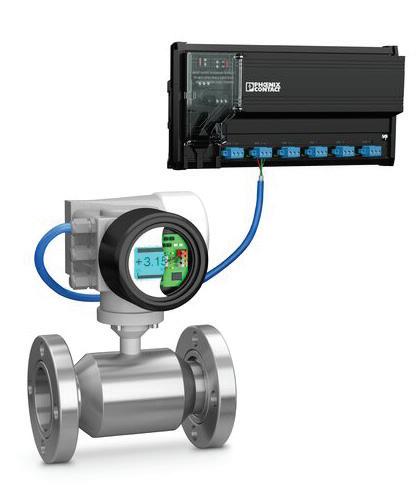
APL Project participants worked closely with TüV, the certification body for intrinsic safety, to validate the developed explosion protection concepts and prepare for standardization of Ethernet-APL in the IEC.
As a single physical layer, Ethernet-APL supports EtherNet/IP, HART-IP, OPC UA, Profinet, or any other higher-level network protocol, according to the APL Project.
To support implementation of EthernetAPL technology in industrial automation and networking products, the APL Project worked with semiconductor manufacturers to bring 10BASE-T1L Phy chipsets for Ethernet-APL to market. With the successful completion of the project, the APL Project says all interested companies can now integrate Ethernet-APL into their products.
The APL Project announcement notes that Ethernet-APL can be applied at multiple power levels with and without explosion hazardous area protection. Information about engineer ing guidelines and best practices for planning and installation, and conformance test speci fications and test tools are available at www. ethernet-apl.org
PA-DIM
The Process Automation Device Information Model (PA-DIM) allows for communication of common process automation instrument parameters across any industrial networking protocol. This protocol agnostic approach is key to the integration of IT and OT (operations technology) systems.
Since 2017, FieldComm Group and OPC Foundation, the original co-owners and codevelopers of PA-DIM, have been working with standards organizations and users to ensure the PA-DIM specification can address the requirements of the NAMUR Open Archi tecture (NOA). This was seen as a necessary step because the growing use of smart sensors, mobile devices, and IT equipment in industrial
20 AW OCTOBER 2022 NEWS
Director
Automation World Ethernet-APL depiction. Source: Phoenix Contact
operations generate more data than the traditional NAMUR automation pyramid can handle. The NOA reportedly addresses this issue by “transmitting this data over a second communication channel without affecting the widely accepted advantages of traditional automation structures and with no impact on the automation system,” according to NAMUR.
Ownership of PA-DIM has now been expanded beyond FieldComm Group and the OPC Foundation to include ISA100 WCI, ODVA, Profibus/Profinet International, NAMUR, VDMA, and ZVEI. This move to expand ownership to these organizations was done to support the adoption of the OPC UA-based standard model for core field device information in process automation technologies.



The first version of the PA-DIM specification, published in 2020, includes an information model and semantic identifiers for common process automation instrument types including pressure, differential pressure, temperature, level, flow, and valve positioners. Current activity within the working group is focused on extending the model to include process analyzers.
OPC UA controller-todevice standard



To further multi-vendor interoperability of instrumentation devices based on OPC UA and the OPC UA FX (Field eXchange) extensions, the OPC Foundation and FieldComm Group have begun working together to develop a single standard for an interoperable interface between PLC (programmable logic controllers) and/or DCS (distributed control systems) and instrumentation devices such as transmitters, instruments, and actuators.
To support this work, the two organizations are developing an OPC UA Instrumentation Working Group, which is open to members of the OPC Foundation and the FieldComm Group. This group will focus on developing a new instrumentation device profile specification for OPC UA FX which will incorporate:
• commonly used interfaces and data types, including functional safety;
• diagnostic information specific to instrumentation devices;
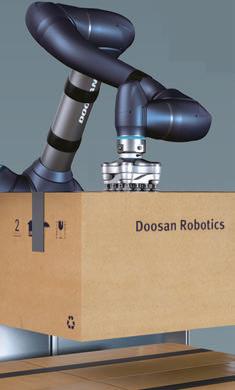

• operation modes of instrumentation devices; and



• state machines and timing models for instrumentation-specific functionality.
The profile specification will use pub/sub communication and can be combined with underlying communication protocols, such as UDP/IP, and physical layers such as Ethernet-APL to support use in both discrete and process manufacturing applications. According to the OPC Foundation, this will address safety instrumentation based on OPC UA Safety and deterministic data exchange based on Ethernet Time-Sensitive Networking (TSN), where appropriate. The instrumentation facet of the specification will be complementary to PA-DIM.
Read about the last big grouping of industrial networking announcements around device and system interoperability.
Read more about the benefits of Ethernet-APL.
Learn what pub/sub means for industrial networks.
21 4BZ�IFMMP�UP�UIF UIF�POMZ�DPCPU�XJUI�B� ��LH�QBZMPBE�BOE�B� ����NN�SFBDI� *UsT�UJNF�UP�NFFU�ZPVS� OFX�IFBWZ�EVUZ� CFTU�GSJFOE� )�4&3*&4�
AW OCTOBER 2022 NEWS
Global Growth in Robotics Expected to Hit Major Milestone by 2024
By Casey Flanagan editorial assistant, PMMI Media Group
Robot installs are predicted to surpass a significant benchmark by 2024, reaching 500,000 installs in a single year, according to PMMI’s 2022 report “Robots and Cobots— An Automated Future.”
This prediction comes after some fluctuation in recent years, including the COVID-19 pandemic and other factors that brought turbulent CAGRs (compound annual growth rates) to the robot industry.
Global annual robot installations increased by a CAGR of 9% from 2015 to 2020, driven primarily by additions enabled through the growth of robotics technology into new capabilities and applications. As one industry expert says in the report, “the advancements in sensors, AI vision systems, and machine learning are opening up huge opportunities for robotics around the world.”
Installations grew slightly to 383,545 in 2020, exhibiting a CAGR of 0.5% from 2019-2020. This increase marked a recovery from the 10% decline experienced during 2019.

Preliminary data for 2021 shows the total value of new global robot installations reached $13.2 bil-
lion in that year, with more than 3 million robots operating in factories around the world.
Global CAGRs for new installs are predicted to level out in the medium single-digit range for 2021 to 2024, eventually reaching the 500,000 single-year milestone.
New robot installations by country/region
Global 2020 data shows Asia (including Australia and New Zealand) is now the single largest robotics market, occupying 70% of the global share of new installations. More than 266,000 units were installed in 2020, up 7% from 249,598 units the year before. Asia outpaced the global 2015-2020 CAGR with a CAGR of 11% in that timeframe. China leads this region with 168,377 units installed in 2020, a 20% increase from the year before.
Growth in Asia is predicted to remain strong, likely creeping into the high single-digit or low double-digit range. Asia will remain the dominant regional market for installs during the forecast period.
Europe holds the next largest share of new robot installations in 2020, at 17%. European installations decreased by 8% in 2020 to 67,700 units, driven by steep drops in Italy (-23%) and
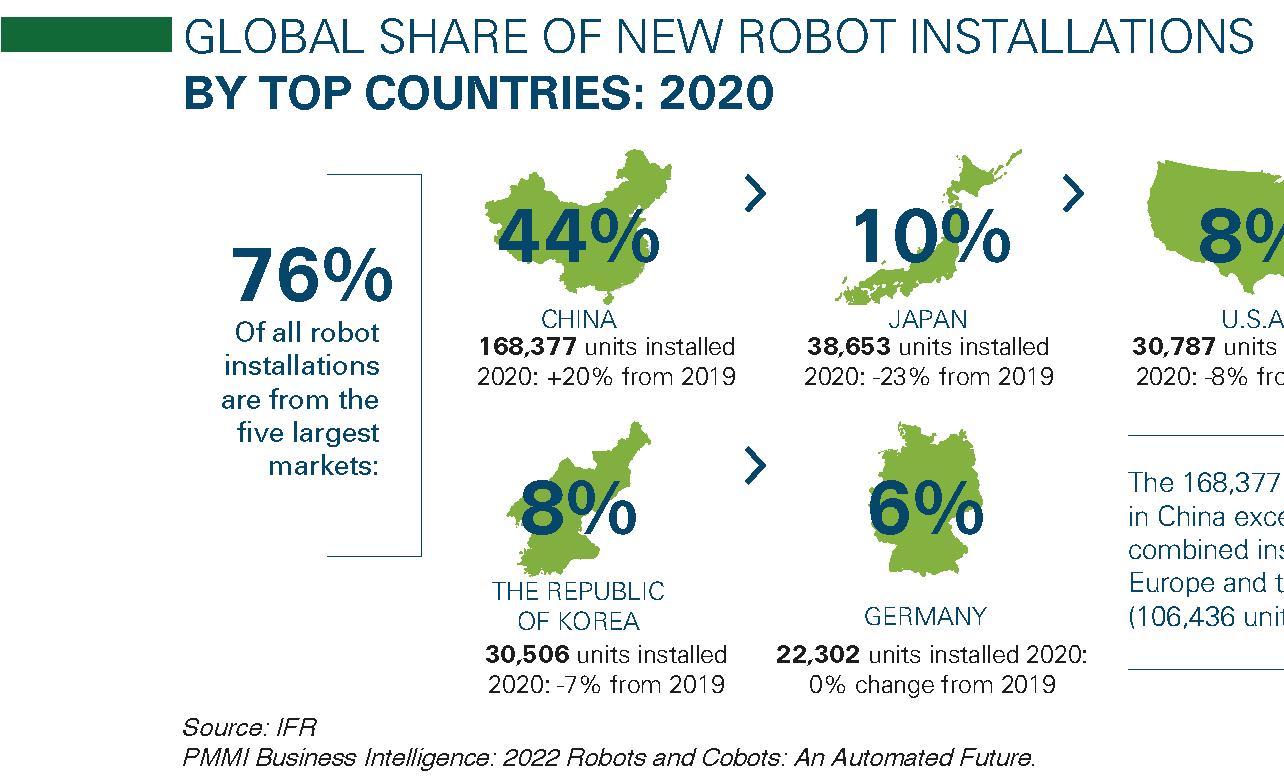
France (-20%). Despite this, the EU exhibited 6% CAGR from 2015-2020. Germany, which accounted for 33% of all installs in the European market, represented 6% of global robot installations at 22,302 in 2020.
Installation growth for Europe is predicted to slow, dropping below the global average into the low single-digit range. Central and Eastern Europe are expected to perform stronger than Western Europe during the forecast period.
The Americas comprised 10% of new installations in 2020. Installs in the Americas dropped by 17% in 2020, with declines in the U.S. (-8%), Mexico (-26%), and Canada (-29%). Effective CAGR for the robot industry in the Americas was 0% from 2015-2020. The U.S. represented 8% of global installations with 30,787 in 2020, down 8% from 2019.
The North American market is predicted to exhibit slightly stronger growth than the global average at a CAGR of 10% for the forecast period.
Source: PMMI Business Intelligence, 2022 Robots and Cobots: An Automated Future.
22 PMMI NEWS AW OCTOBER 2022
PMMI Announces Fifth Annual On the Rise Awards Winners
Andersen
PMMI On the Rise winners meet the follow ing nomination criteria: young professional 35 years of age or younger employed by a PMMI member company for at least one year, displays leadership potential at the company, and demonstrates a desire to advance his/her career in packaging and processing.
“This year’s On the Rise winners are making an impact on the future of our industry, contributing
to everything from enhanced sales and marketing efforts, to new and improved processes and solu tions, to attracting and retaining new talent,” says Jackie Sessler, North America marketing director of Beumer Group and chair of the PMMI Emerg ing Leaders Committee. “PMMI and the Emerg ing Leaders Committee are pleased to recognize these extraordinary leaders and hope that the On the Rise Award provides an opportunity to further
their professional development in packaging and processing.”
Award winners were honored at PMMI’s Annual Meeting on Sept. 12, in Oak Brook, Ill., and received free airfare, event registration, and hotel stay. The winter issue of OEM Magazine, the official publica tion of PMMI, will feature profiles of the winners.
23PMMI NEWS AW OCTOBER 2022
The winners of the 2022 On the Rise Awards are: Alison Zitzke Senior Product Manager Orbis Corp. Ravi Patel Controls Engineering Manager ID Technology/ProMach Inc. Allison Wagner Business Development Manager Morrison Container Handling Solutions Samantha Hoover Mechanical Design Engineer Spee-Dee Packaging Machinery Caitlin Eargood Service Project Manager Mettler Toledo Taz Lombardo Content Marketing, Senior Specialist Barry-Wehmiller Packaging Systems Eric
Marketing Manager Delkor Systems Inc.
Tom Lex
Director of Engineering TechniBlend
Nancy Garza-Castaneda
Administrative Manager Formers International William
Reese
Director
of
Engineering Garvey Corp. Developed by PMMI’s Emerging Leaders Committee, the awards recognize 10 young professionals who have demonstrated leadership potential in packaging and processing.














24 AW OCTOBER 2022 WAREHOUSE AUTOMATION
Manufacturing technology advances have extended the realm of automation beyond plant floor sensors, controllers, vision systems, and robotics into closely connected data collection and analysis using artificial intelligence. These technologies enable a “smart factory” to self-optimize and adapt to conditions in real-time. Despite these advances, warehouse and related material moving operations tend not to be nearly as modernized as plant floor operations.
“If you look inside the most modern environment, warehouse or factory, material handling, broadly speaking, is mostly analog,” says Matthew Rendall, CEO of Otto Motors, a maker of autonomous mobile robots (AMRs). “Any place where a forklift truck is driving something around, it is highly analog. That means the amount of data you have at your fingertips to analyze is limited. For decades, operators have been grasping at low accuracy, low frequency, and expensive-to-capture data trying to figure out how to run a continuous improvement program.”
For example, you can go into a factory or a warehouse today and still see industrial engineers sitting in lawn chairs at an intersection in the plant with a clip board, pencil, and stopwatch to monitor material flows, says Rendall. “It is an expensive thing to request of a highly trained industrial engineer, so it doesn’t get done frequently,” he says.
Which means the process, by its nature, is not as exact as it should be; plus, it’s rarely updated.
But this antiquated, analog surveying method is shifting in response to the decreasing cost of computer storage, increasing compute power, and new tools that target warehouse and distribution operations.
The roaming robot
Otto Motors is delivering tools to help industrial engineers automate the study of time and motion—and it comes in the form of the AMR. “The remarkable contrast that an AMR brings to the table is that we have sub-inch and sub-second level accuracy, and the marginal cost to collect an additional survey is zero,” Rendall explains. “So you are able to run industrial engineering time and motion studies on steroids at all times.”
The AMRs from Otto Motors are designed for material handling in the manufacturing and warehouse operations in a free-movement manner. In an automotive warehouse, for example, there could be 30,000 parts moving across the facility.
“It’s a symphony of motion,” Rendall says. “[With data from the AMRs] we are able to harness insights about how those 30,000 parts are moving in order to create a smarter tra c network.”







The foundation of Otto Motors’ AMR is a

25 AW OCTOBER 2022 WAREHOUSE AUTOMATION
proprietary version of the simultaneous localization and mapping (SLAM) algorithm, which relies upon cameras and laser scanners to develop a photorealistic floorplan.
“Think of an AMR as having a photographic memory. As it’s driving around it is constructing a picture-perfect representation of that environment in its memory,” Rendall says. Using that underlying localization and mapping, you can plot out where a vehicle has traveled. “As a result, the
side benefit [of an AMR] is that we have one of the most sophisticated data collection machines a factory or warehouse has ever seen, patrolling the floor 24/7,” Rendall says.
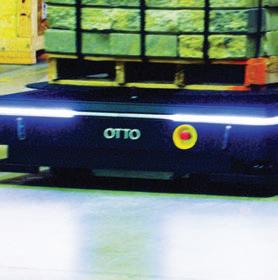
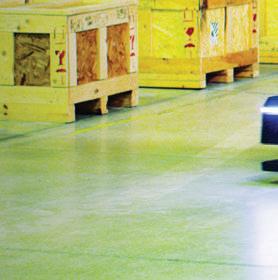

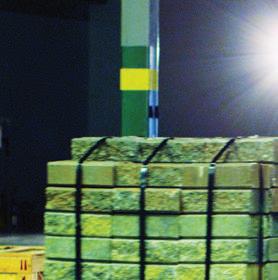

The AMRs operate with fleet management software which includes a feature called “factory replay,” providing a time-lapse recap of the entire day’s production. The software can take a 16-hour operation and collapse it down to five minutes, which provides an industrial engineer with a birds-
eye view of the floor and the ability to rewind, fast-forward, and zoom in to a certain time during an incident—as well as before and after—to extract insights about ultimate root causes of problems on the floor.
Another company, 634AI, o ers an AI-driven technology called Maestro, which is designed to safely orchestrate the movement of AMRs and coordinate situational reactions to create a more e cient and safer environment. Using o -the-
26 AW OCTOBER 2022 WAREHOUSE AUTOMATION
shelf, Power-over-Ethernet ceiling-mounted cameras, and proprietary computer vision technology, Maestro pulls video streams from di erent cameras to create a grid on the floor.
Those videos are stitched together to create a real-time map of the facility. Then, deep learning AI coupled with computer vision algorithms draw semantic analytics from data on the factory floor. “This data can be productivity-related information providing real-time safety alerts, near-miss

analyses, task allocation, and the ability to instigate and navigate a robot’s autonomous capabilities live on the factory floor,” says Shlomi Hatan, 634AI’s vice president of business development and operations.
Every factor in the process is identified, classified, tracked, and managed by Maestro, including raw materials, mobile robots, forklifts, boxes, and even people. “Designed to be hardware-agnostic, Maestro is interoperable with other systems to

enhance company workflows on a universal scale,” Hatan explains. “The general rule is, if Maestro sees it, it can be tracked and controlled in real time.”
Hatan adds that Maestro’s control capabilities can be extended to deliver custom, AI-generated productivity propositions. For example, Maestro can display forklift slow zones to locate bottlenecks and interferences for vehicles and workers, informing them of obstacles to help shorten travel times. It can also track the traveled distance and driving hours of forklifts and robots to identify underutilized resources or assure timely maintenance of equipment. It can even alert operators of incorrectly positioned materials and pallets.
Collecting all this information internally and creating a map of material movement can also help companies with supply chain struggles.
“There’s an interesting relationship between transparency and automation,” Rendall says. “We can’t influence what time the parts arrive on the loading dock. But if we are responsible for all the material handling that happens once the materials hit the receiving dock, we can use a QR code or RFID tag to scan the inventory. That inventory is only touched by a machine, and when that’s the case, you should be able to see within inch- and second-level accuracy where every nut, bolt, and screw is inside the operation. So you have a much better handle of what inventory you are working with inside your operation to more intelligently use the resources available to you.”
Automated storageand retrieval
Industrial control suppliers are also adding intelligence to automated storage and retrieval systems (AS/RS) used in warehouses and distribution centers.


Beckhoff Automation, for example, offers a shuttle control system for AS/RS applications in compact form factors. This system includes TwinCAT Machine Learning software to reduce energy consumption while optimizing acceleration and deceleration of the shuttles. “The machine learning (ML) functionality automates this so there is no human intervention required to achieve the process improvements,” says Doug Schuchart, Beckhoff’s global material handling and intralogistics manager.
In addition, the EtherCAT communication protocol used in this system allows information to be collected in large quantities and stored in a database on a Beckho controller. That data can then be transmitted to the cloud.
“Once at the enterprise level or the cloud, data science software can be used to develop ML inferences for equipment optimizations and predictive

27 AW OCTOBER 2022 WAREHOUSE AUTOMATION
The Otto 1500 autonomous mobile robot for heavy payloads includes front and rear 3D cameras for advanced obstacle avoidance and continuous mapping for a real-time visual of the facility.
maintenance applications. These ML inferences can then be deployed using TwinCAT Machine Learning to be executed in the PLC in real time,” Schuchart explains.
Dealing with dock delays
AMRs coupled with AI can increase productiv ity and safety inside operations. And machine learning coupled with PLCs can improve order fulfillment and throughput. But what happens when the truck doesn’t show up at the receiving dock? Traditional warehouse management sys tems (WMS) don’t have the ability to recalculate everything when there are shipping delays, or if there are too many shipments and not enough docks, or if inventory is in the wrong building.
To address such issues, AutoScheduler.AI has developed a cloud-based intelligent warehouse orchestration platform that integrates with ex isting WMS, ERP, and even yard management systems to provide dynamic dock scheduling, proactive cross-docking, and prescriptive ana lytics that balance inventory flow and drive labor efficiencies. “Our goal is to be the brain of the
warehouse,” says AutoScheduler.AI CEO and co-founder Keith Moore.
The work started as a project with Procter & Gamble (P&G). P&G operates one main plant in Ohio that uses seven nearby satellite warehous es for storage. Across this campus, the project noted more than 250 outbound full-vehicle shipments per day and, of those, 85% were drop and hook, and 15% were live load. These opera tions require manual efforts that are completed based on who is scheduled and the need for the day. But volatility in the production schedule and volume made it difficult to plan, resulting in an inefficient operation.
Using the AutoScheduler.AI technology, P&G doubled shipments from the plant directly to customers without increasing inventory, reduced shuttle moves involving outside warehouses by nearly 50%, reduced workforce planning from eight hours to 20 minutes per day.
That experience prompted Moore to turn this into a scalable system for any warehouse or dis tribution center operation to provide analytics that describe what is happening, predict what
will happen, and prescribe an optimal plan based on that information.
Every few minutes, AutoScheduler looks at the current situation and then runs “what-if” scenar ios based on inventory and constraints to maxi mize flow through the building. “We pull informa tion from the WMS and other systems, run the optimization, and push it back into the execution system. So when someone scans a pallet…our plan flows straight through to the floor, and nobody even knows we exist,” says Moore.
The AutoScheduler technology is exactly the kind of cognitive toolsets that Stephen Laaper, a principal and manufacturing strategy leader at Deloitte Consulting, says is coming to day-to-day warehouse operations.
“Supply chains will continue to be pressed and stretched in various ways for the foreseeable fu ture,” Laaper observes, noting that more action able information is imperative. “Because of that, the nature of these solutions are becoming in creasingly important.”
The Beckho EP7402—a compact, IP67rated motor-driven roller controller—can be used for AS/RS and other applications inside distribution centers.
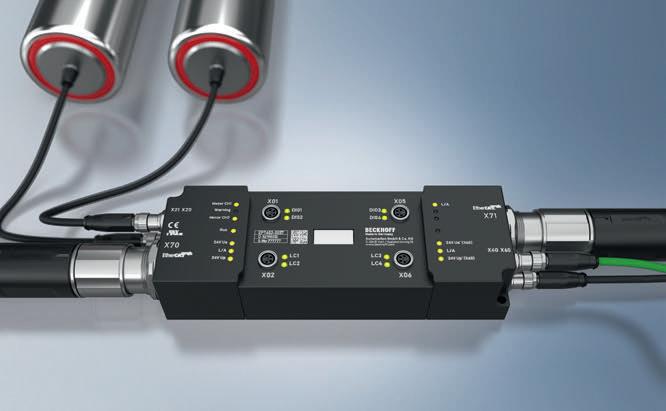
28 AW OCTOBER 2022 WAREHOUSE AUTOMATION
Industry Training
Cost-effective,
Want a workshop tailored to your company?
Consider a PMMI in-plant workshop, customizing these workshops to meet your company’s speci c needs and goals.







Support your training through
Skills
Fundamentals of Field Service

Improve your service technician




Oct.
Chicago,
Certified Trainer Workshop
Provide better machinery training for


safety
Oct. 23-24,
& Oct. 25-26,
Chicago,
Risk Assessment Workshop
Learn risk assessment basics and how to


machine
Oct. 21-22,
Chicago,
convenient training... just for you.
the PMMI U
Fund, a workforce investment matching program. pmmi.org/skills-fund
team’s customer service skills and boost customer satisfaction (PMMI members only)
23-24, 2022 PACK EXPO International;
IL
your customers while enhancing
2022
2022 PACK EXPO International;
IL
incorporate risk assessment into
design
2022 PACK EXPO International;
IL Learn more and register at pmmi.org/industry-training
In this research project, Automation World highlights the technologies that comprise industrial Big Data and showcases insights from your end user peers and system integrators about how they’re using these technologies to improve decision-making.












 By Beth Stackpole, contributing writer, and David Greenfield, director of content/editor-in-chief
By Beth Stackpole, contributing writer, and David Greenfield, director of content/editor-in-chief









30 AW OCTOBER 2022 PEER-TO-PEER FAQ
I
f they’ve used Big Data to any degree, it’s hard to find a company that doesn’t extoll its virtues for predictive and real-time insights. Industrial Big Data in particular—specifically the large and diversified time-series data emanating from Internet-connected automation equipment from sensors to plant floor machinery—has notable and demonstrable business value for companies looking to distill data into insights that drive better business and plant performance.
As trendy as it may sound, it’s only the name— Big Data—that’s of recent vintage. Companies have been collecting time series data from factory floor and field assets for decades. However, much of this data remains unused, trapped in siloed, proprietary historians and supervisory control and data acquisition (SCADA) systems that often aren’t readily accessible much less available to meld with other relevant business data to drive broad-based actionable insights. And while plant managers and maintenance workers have long analyzed data from specific plant floor assets—mostly with spreadsheets—this was rarely, if ever, done with wide business transformation in mind.
That’s all changed thanks to the scale of what’s possible fueled by technology advances in edge and cloud computing, data acquisition and historian tools, and artificial intelligence (AI) and machine learning (ML) analytics. With these technologies, manufacturers can transform siloed data and proprietary systems into flexible and intelligent facto-
ry floor and industrial operations that can be holistically automated and optimized in near-real-time. They are building next-generation systems able to sift through the volume and variety of industrial Big Data to uplevel operations and optimize performance, including reducing maintenance costs, ensuring near-zero downtime, boosting product quality, and driving additional revenue streams through the introduction of new services.
Orchestrating a successful industrial Big Data analytics program requires investment in a num ber of central technology components. Critical to the mix are:
Data acquisition systems: The first step in a Big Data initiative is identifying and capturing all relevant data. One way to do this is with a data acquisition (DAQ) system, which processes sampling signals that measure real-world physical entities and converts them to a digital form for use by various computing systems. The digital acquisition components typically comprise sensors that measure phenomena like temperature, voltage, fluid flow, strain and pressure, and shock and vibration along with signal conditioning devices and analogto-digital signal converters. The conditioning and converter devices work together to filter the analog signals from sensors, converting them to a digital formal that is compatible with standard computing resources for further analysis.
Most DAQ systems record, store, and visual
END USER SURVEY
ize the data in addition to providing some base level analysis and reporting capabilities. More recently, data acquisition systems are being integrated with real-time control applications, pairing the ability to acquire data quickly with the possibility of reacting to events using highly deterministic data. These new ca pabilities also allow manufacturers to track and mea sure current performance against historical trends.
Historians: One of the more popular data collection technologies are historians. Since their initial development in the early 1980s, data historians have found wide use across every manufacturing and processing vertical. Essentially, a data historian is software that logs production data and makes the data it collects easily accessible for analysis.
Though its function is not that di erent from a data acquisition system, the di erence lies in how they’re designed to collect data. DAQs collect both high- and low-speed data from a variety of sensors, and commonly have a very high-powered computing system either built-in or connected to them. DAQs can also handle signal conditioning— an essential capability for processing sensor data.
While historians can collect direct sensor data like DAQs, they can also collect data from larger systems and equipment; however they tend to do so at a slower rate than a DAQ system. While historians can collect data in real time, their main purpose is to collect data over longer periods of time— days, weeks, or months—rather than for specific,
31 AW OCTOBER 2022 PEER-TO-PEER FAQ
How do you collect and aggregate data from these systems/devices for analysis?
Computerized Maintenance Management System (CMMS) Manually/handwritten and then entered in spreadsheet software such as excel Historians Edge Computing Cloud computing Hybrid edge/cloud environment Other 44% 29% 3% 29% 27% 26% 23% SYSTEM INTEGRATOR SURVEY Manually/handwritten and then entered in spreadsheet software such as excel Historians Computerized Maintenance Management System (CMMS) Hybrid edge/cloud environment Cloud computing Other Edge Computing 57% 57% 0% 43% 29% 14% 14% How do your clients collect and aggregate data from these systems/devices for analysis? Automation World Big Data Survey 2022. Totals equal more than 100% as respondents could select multiple options Automation World Big Data Survey 2022. Totals equal more than 100% as respondents could select multiple options
short time periods.
The two basic types of historians used in manufacturing are:
• Time-series databases, where data are logged with time stamps to simplify tracking and monitoring; and
• Operational historians, which combine historian software and time-series databases for fast re trieval of the large amounts of data collected for Industry 4.0 and Internet of Things applications.
CMMS (computerized maintenance management systems): This software is widely used for its ability to centralize maintenance information and automate or direct maintenance workforce tasks. A capable CMMS can contain all of a manufacturer’s or processor’s maintenance information such as work orders, preventive maintenance schedules, assets, logs, work histories, parts inventory, vendors, purchase orders, and maintenance reports. Algorithms used in the CMMS can recognize and organize maintenance-related data to provide insights on asset condition, lifecycle, and maintenance tasks. A CMMS also typically notes the equipment, materials and resources required for the specific maintenance tasks it recommends.
Like other data collection technologies, a data base is at the core of any CMMS, but it is more than a field data capture tool. The insights it provides help reduce downtime and aid troubleshooting. That’s why CMMS technology is often used for creating reports and identifying key performance indicators.
Edge and cloud computing: As more sensors, PLCs, and other devices are connected to the Industrial Internet of Things (IIoT), there is a requirement to move additional computing power closer to the source where data is generated. Bringing computing capabilities closer to the edge of a network—directly on the shop floor, for example, or at a remote oil rig or wind turbine site—enables e cient processing of real-time data about the condition and performance of the industrial asset without the traditional latency challenges that arise when channeling data to a central network system for monitoring, analysis, and even real-time automation. Edge capabilities also enable IIoT-enabled use cases in instances where high-bandwidth connectivity is not readily available, such as in rural areas or remote plant sites.
Edge capabilities are central to empowering new data-driven use cases such as predictive maintenance or real-time quality management. In these instances, plant floor equipment and industrial assets are continually monitored and analyzed at the edge, empowering corrective actions that could include diagnostic checks, initiating maintenance work orders, even enabling a specific conditionbased maintenance action.
In most IIoT-enabled industrial Big Data use cases, it’s not a matter of deciding between edge or cloud-based systems to support predictive maintenance or asset optimization applications. Typically, companies turn to a combination of edge and cloud functionality, with the cloud poised to deliver additional storage and compute scalability while provid-
ing a way to aggregate data from myriad industrial assets and edge computing systems, or even multiple plant floor operations for analysis.
Advanced analytics: It’s not enough to collect and process industrial Big Data—there also needs to be capabilities in place to analyze and interpret the data, potentially in near-real-time, to drive intelligent insights and initiate closed-loop corrective actions. The incoming generation of analytics tools are powered by AI and its subset of machine learning technologies, making them much more capable of finding patterns in voluminous time series and other IIoT data for use cases such as predictive maintenance, real-time quality control, and scenario testing for root cause analysis.
While operations personnel have had early successes building analytical models, typically in Excel spreadsheets for a single machine in a factory or for a particular use case, they have less experience scaling those e orts to bring intelligence to the entire factory, let alone to operations that span factories across the globe. The unique nature of data collected in historians and SCADA systems is also di erent than the more familiar enterprise analytics. While enterprise data in financial or customer systems is usually well structured, time-series data lacks context for understanding how the raw data can and should be applied to understand the state of a specific process or the condition of materials on a manufacturing line. Next-generation analytics tools add modeling and machine learning capabilities to uncover patterns, classify and contextualize
32 AW OCTOBER 2022 PEER-TO-PEER FAQ
Specific line/equipment improvement Improve maintenance operations Part of our overall Industry 4.0/digital transformation program to digitalize and collect all relevation production data Part of a Lean Manufacturing program Improve operator interaction with equipment Why are you planning to gather more information for analysis? (select all that apply) 70% 65% 54% 39% 35% Maintenance operations improvement Industry 4.0/smart manufacturing/digital transformation initiatives Specific line/equipment improvement FOMO (fear of missing out) on potential improvement In response from customer/market pressure to improve production 100% 40% 40% 40% 0% What factors are driving this increased interest? (select all that apply) END USER SURVEY SYSTEM INTEGRATOR SURVEY Automation World Big Data survey 2022. Automation World Big Data survey 2022.
process and product data, and in some cases, create a digital twin of a factory so anomalies can be spotted and downtime issues readily addressed.
Without the technologies that deliver such context, manufacturers will be hard pressed to fully leverage data to drive Industry 4.0 applications such as continuous operational performance improvements, condition monitoring, or predictive or prescriptive maintenance applications.
Analytics software can be used a stand-alone technology, receiving data from a variety of connected devices. It can also be included in edge and cloud computing technologies wherein data collection and analysis are conducted in one system. Many manufacturers employ a hybrid approach using edge and cloud technology for analytics—with edge computing analyzing real-time data for day-to-day operational insights and cloud computing for longer-term analysis for strategic operations and business applications.
End user and integrator insights
To better understand how industry—across discrete manufacturing and processing—is collecting and analyzing data, the business factors driving their decisions around data, the types of technologies they use, and their recommendations around the selection and use of data collection and analysis technologies, Automation World conducted research to gather data from end users and system integrators.
While most end user respondents (86%) indicate they collect data from equipment and devices specifi cally for production improvement initiatives, most have begun doing so only within the past five years. Only 27% of respondents indicate that they have been col lecting data for such purposes for more than six years.
In line with these end user results, 71% of responding industrial system integrators report seeing a noticeable increase in interest around data collection and analysis from their clients.
An interesting point among the end user responses is that 98% plan to gather even more data from their pro duction systems in the next two years. However, only 30% plan to do so for specific operational improvements.
This could indicate that, of those who have been collecting and analyzing data for a few years, many may have already discovered numerous ways of improving their production operations and could be looking to leverage the data they collect for other, strategic business purposes.
If you’re among those companies not actively aggregating and analyzing data for production improvement, most of your industry peers are also relatively new at it too. However, with so many businesses actively pursuing this, those companies not already looking to improve production via data analysis are in a small enough minority to be considered laggards in this area. Meaning that it will only become more dif-
ficult to compete as your data-analyzing competitors discover ways to improve their production operations before you can do the same.
Level of data collection
Looking at the depth of data collection activities across industry, 53% of end users say that less than 50% of their production systems or related devices are connected for data collection purposes. In contrast, system integrators note that, among their clients, only 42% collect data from less than 50% of their production systems or devices.
At the other end of the spectrum, integrator respondents note that 29% of their clients collect data from all of their production systems/devices. This may a bit of overestimation on the part of the integrator respondents, as only 5% of end user respondents report having more than 90% of their systems/devices connected for data collection.
There is also a significant di erence among respon dents in the middle tier—in which 51%-90% of systems are connected. Just 29% of integrators indicate their clients have 51%-99% of the systems/devices connect ed, while 42% of end users estimate that 51%-90% of their systems/devices are connected for data collection.
Driving factors
Among end users, the top three reasons cited for data collection and analysis is the improvement of specific line or equipment operations (70%), improving maintenance operations (65%) and as part of an overall Industry 4.0/digital transformation initiative (54%). System integrators also cited these applications as the top three reasons they see industrial clients collecting and analyzing data, but the order di ers somewhat. Integrators say 100% of their clients’ data collection and analysis is put toward to maintenance operations improvement, while just 40% cite both Industry 4.0/digital transformation initiatives and specific line/equipment improvements.
Another reason cited by 40% of integrators is FOMO (fear of missing out) on potential unidentified improvements. One integrator respondent said the emphasis now being placed on remote operations is making organizations “not want to miss any data points that could lead to erroneous decision making.”
Types of technology used
Talk of digital transformation, Internet of Things, Industry 4.0, and Smart Manufacturing have dominated industrial technology discussions for more than a decade. But the reality is that most manufacturers rely on data collection and analysis technologies that existed long before the advance of the technologies receiving the bulk of attention today.
That’s not to say newer collection and analysis technologies are going unused—as that is certainly
END USER
INTEGRATOR SURVEY
33 AW OCTOBER 2022 PEER-TO-PEER FAQ What is your estimate for the amount of production systems/devices from which you collect data from? 91-100% (5%) 76-90% (23%) 51-75% (19%) 26-50% (19%) 11-25% (26%) 1-10% (8%) 100% (28%) 76-99% (15%) 51-75% (15%) 25-50% (15%) 1-25% (28%) Of the clients you work with, what is your estimate of the amount that actively collect data from production systems/ devices for production improvement analysis?
SURVEY SYSTEM
Automation World Big Data survey 2022.
Automation World Big Data survey 2022.
not the case. Edge and cloud technologies, for example, are being used widely across industry. Even so, there remains much headroom left for their growth. Only 29% of system integrator clients use hybrid cloud/edge technology and 14% use stand-alone cloud systems.
According to our survey results, most manufacturers rely on three methods of data collection and analysis—and only two of them would be considered automation technologies.
System integrator respondents say that 57% of the clients still rely on handwritten data collection that is then entered into spreadsheet software. The integrators also note that 57% of their clients also use historians, a technology that emerged in 1980. (Editor’s note: respondents were allowed to check multiple categories of data collection types to more accurately reflect the use of multiple technologies in a facility; thus the percentages will exceed 100%).
Clocking in at 43% are computerized maintenance management systems (CMMS), a technology that debuted in the mid-1960s. Integrator respondents also noted the use of data acquisition technologies, another technology that’s been in use since the 1960s.
End users responding to our survey still ranked CMMS and handwritten/ spreadsheet as the top two data collection and analysis methods used, though their percentages di ered from the integrators. According to end user respon dents, 44% use CMMS—largely in line with the 43% reported by integrators. However, end users report only 29% relying on a combination of handwritten and spreadsheet use, which di ers dramatically from the integrators’ response of 57%. Though this discrepancy could be attributed to numerous factors, it would be dif ficult to ignore the possibility that many end users probably prefer not to mention their reliance on handwritten data collection in 2022.
Of note, end user respondents cited broader use of cloud and edge technolo gies than did integrators. Though no integrators cited use of stand-alone edge technologies in their clients’ facilities, 27% of end users report its use. Also, 26% of end users cite use of stand-alone cloud technologies, compared to the integrators’ response of 14%. End users’ response about use of hybrid edge/cloud technologies is more in line with the integrators’ response—with 23% of end users citing its use compared to the 29% noted by integrators.
Looking more closely at end user responses around cloud and edge technology use, 37% cite use of a hybrid edge/cloud environment for data analysis specifically. In comparison, 32% use edge technology for analytics while 28% use cloud computing.
Recommendations
As a final step in our research, we asked integrator and end user respondents to o er their best advice about selecting and using data collection and analytics technology based on their experience with both.
Key points highlighted by integrators include:
• Start small but ensure the technology you’re using for these small-scale applications can scale across the plant and enterprise.
• Focus on improving the process, not on trying to achieve a specific number.
• Don’t overlook data management and data governance, as data standardization is the key to successful downstream analytics.
• Begin by examining your operations to determine where you should start
and analyzing data for meaningful decision-making strategies.
• As you review the technology landscape, carefully assess whether you have the internal resources to support this e ectively in-house or if you’ll need outside help.
End users’ recommendations tended to focus more on gathering input from di erent groups in the workforce:
• Realize that data analysis, on its own, can often be an indirect measure of what is needed to improve operations. Therefore, plan to be inventive
SYSTEM INTEGRATOR SURVEY
When
World Big Data survey 2022.
around key performance indicator determination and involve process experts as much, if not more so, than data specialists.
• Be sure to include workers directly involved with your production processes. Managers won’t always have the correct point of view to detect areas of opportunity in data.
• Don’t discount your in-house engineering and operating expertise, as they can provide added benefits beyond that delivered by the technology.
34 AW OCTOBER 2022 PEER-TO-PEER FAQ
Historians Computerized Maintenance Management System (CMMS) Edge computing Cloud computing Hybrid edge/cloud computing Other 17% 67% 1 2 3 4 5 6 17% 17% 50% 33% 33% 17% 33% 83% 33% 33% 33% 17% 50% 17% 17% 17% 17%
asked by a client for help with data collection and analysis, what types of systems do you recommend? (ranked in order of importance with 1 being the most recommended)
Automation
collecting
Robots Ensure Zero-Defect
Tire Pressure Sensor Assembly
MMS Modular Molding Systems created a system using Stäubli robots to fully automate a tire pressure sensor assembly capable of producing a complete sensor every six seconds.
By Jeanne Schweder, contributing writer
Every car tire manufactured today comes with a sensor that measures tire pressure and sends a radio signal to a receiver unit within the vehicle.
At BH Sens, a Chinese automotive industry supplier, the production line for its tire pres sure sensors assembles 10 components to form a ready-to-use tire pressure sensor. These sensors are built directly into the tire valve. To fully au tomate the assembly process for these sensors, BH Sens required several quality steps to be in tegrated to guarantee high availability and quick production turnaround to achieve its goal of mak ing four million ready-to-use sensors per line— one every six seconds.
Flexibility was also required, as the assembly process produces three sensor variants using dif ferent printed circuit boards.
MMS Modular Molding Systems GmbH of Berndorf, Austria, develops interlinked and mod
ular lines for the manufacture of plastic/metal hy brid components. MMS designed and built a com pact, fully automated tire pressure sensor line for BH Sens’s tire pressure sensor assembly process.
Assembly process components
The assembly process begins on a rotary table, with three Stäubli robots responsible for handling the individual components. The first SCARA ro bot takes the circuit board out of a tray on the ro tary table and places it into a workpiece carrier. A second robot then removes the battery from an other tray and places it on top of the circuit board.
“To guarantee continuous monitoring and documenting of test and measurement data dur ing the production process, components are all assigned a data matrix code by a marking laser. These codes are scanned and assessed at every station,” explains Stefan Babka, designer and project manager at MMS.
The compact design of Stäubli’s TS2-60 enables multiple complex actions in a small space. It has maximum payload of 8.4 kg with a 620 mm reach.
Initial quality checks, such as voltage testing, are completed within six seconds before the com ponents are transported to pressure chambers on a linear transport conveyor. In these chambers the airtightness of the sealed components is moni tored. Next, the end-of-line test simulates com munication with vehicle electronics to ensure that each individual sensor is 100% functional.
The whole process comes to an end on the rotary table, where the sensor is attached to the valve and the finished product is automatically screwed in place. This completed sensor/valve combination is then packaged for use as an origi nal or aftermarket part.
Robot details
All three SCARA robots used on the assembly line are from Stäubli’s TS2 range. According to Babka, “A TS2-80 is responsible for handling the circuit boards. The battery is handled by a TS2-
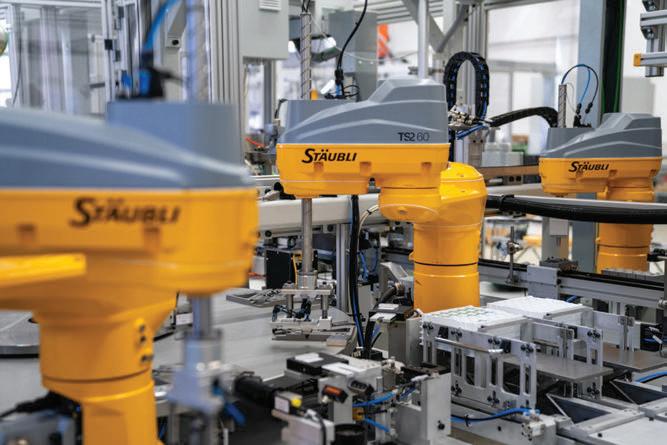
35 AW OCTOBER 2022 CASE STUDY
Stäubli’s TS2-40 SCARA robot has a maximum payload of 8.4 kg with a 460 mm reach.
60, which is equipped with a longer ball screw. Then a camera-assisted TS2-40 is used to place the seal inside the housing.”
Stäubli’s SCARA models were chosen by design ers at MMS because of their interaction capability with the camera systems required to ensure correct component positioning, as well as to communicate with the Asyril flexible feeders used on the assembly line. MMS chose these Stäubli SCARAs because
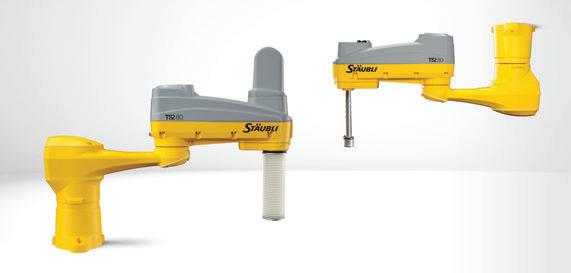

the movement of the components had to take place on four-axis robots, as six-axis robots would have been too slow for use in this environment.
The BH Sens production line undergoes at least 14 automated steps within a very compact area, so flexibility is key to allowing changes to be made to the systems without completely restructuring the hardware components. Not even the grippers need to be changed to accommodate the various
components, according to Babka.
Production changeover is also made easier through the incorporation of an automatic clearing function into the Asyril feeder system. This function eliminates the need for operators to manually clear the con veyor, as all parts are automatically cleared from the feeder and transported further by conveyor.
Stäubli’s TS2-80 SCARA robot has maximum payload of 8.4 kg with an 800 mm reach.
36 AW OCTOBER 2022 CASE STUDY
Unmanaged Power Over Ethernet Switches


Antaira releases two new hardened series of unmanaged PoE switches and integrates persistent PoE technology into managed switches to ensure consistent data collection during reboots or power outages.
The Antaira LNP-0800G series of unmanaged switches support eight Gigabit Ethernet connections with 30W per port PoE+.
The Antaira LMP1204G-SFP-bt managed switch with persistent PoE technology.
Industrial companies are increasingly using unmanaged switches to connect edge devices for Industrial Internet of Things (IIoT) applications. These switches enable Ethernet devices, such as surveillance cameras or sensors, to reliably stream data.
When evaluating unmanaged switches, it’s important to ensure switches planned for use on the plant floor are hardened to withstand extreme temperatures, humidity, vibrations, dust, chemical substances, and electromagnetic interference.
Antaira, a manufacturer of industrial networking and communication products, has released its latest unmanaged switch models featuring Power over Ethernet (PoE)—the LNP-0800G and LNP-0800G-24 series. Housed in rigid, IP30-rated DIN-rail metal cases, these fanless switches deliver long-term reliability in harsh
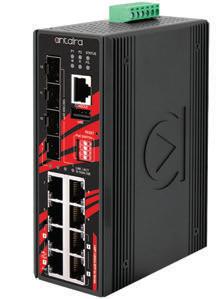

industrial settings, including extreme applications where temperatures range from -10°C to 65°C (LNP-0800G) or -40°C to 75°C (LNP0800G-24). Both support eight Gigabit Ethernet connections with 30W per port PoE+ (802.3af/at) power for remote devices. Both switches also support 9.6Kbytes Jumbo Frame to improve network performance by making data transmissions more efficient. Store-and-forward transmission ensures minimal collisions and frame errors, while high EFT and ESD protection prevents interference in automation, ITS, solar or other high electromagnetic environments.
The key difference between LNP-0800G and LNP-0800G-24 switches is that the LNP0800G-24 supports dual 9-55V DC power inputs for power redundancy, while the LNP0800G has a range of 48-55V DC for basic
power requirements.
In other Ethernet switch-related product news, Antaira has now integrated persistent PoE technology into its 802.3bt PoE managed switches. This technology ensures power is continuously carried to powered devices during firmware upgrades so that data collection is not terminated. It also prevents connected devices from rebooting once power is restored.
Antaira products featuring the persistent PoE include the LMP-1204G-SFP-bt, LMP0702G-SFP-bt and LMP-C602G-SFP-bt series managed switches. These switches feature a mix of 6 to 12 Ethernet and SFP fiber ports combined with 802.3bt PoE++ to deliver up to 90W per port.
AW OCTOBER 2022 NEW PRODUCT SPOTLIGHT
37
Servo Drive
Advanced Motion Controls, www.a-m-c.com
The new 60A continuous FlexPro servo drive, model FM060-60C-CM, adds CANopen communication to the previously released EtherCAT version. The CAN interface follows the CiA DS301 communications profile and the CiA DS402 device profile. It can operate at the 60A peak rating continuously with no need for current foldback, while staying at the same size of the micro sized FlexPro models. The size, and operating voltage of 10-55V DC allow use in battery powered applications that require high power in a compact form. Other features include: BiSS C and incremental encoder feedback; torque, velocity, and position operating modes; configuration and full loop tuning; and safe torque off.



Intelligent CAD Plug-in
Bosch Rexroth, boschrexroth.com
The FramePro plug-in allows for direct transfer of CAD files for Bosch Rexroth’s modular aluminum profile system elements into Autodesk Inventor and Solidworks CAD environments. By integrating a library of models and data kept up to date by Bosch Rexroth, CAD data no longer need to be transferred from external sources manually. Profile configuration processes are set to automatically match connector types, and intelligent macros streamline incorporation of panel elements and doors. If the dimensions in the 3D sketch are changed, FramePro adjusts the length of the placed profiles accordingly. This plug-in also automatically transfers all components used including profile machining processes to a parts list which can be used to request a quote or place an order.

Photoelectric Sensors

Contrinex via AutomationDirect, automationdirect.com


AutomationDirect now offers Contrinex C23 standard and clear object detection sensors. These mini rectangular sensors are designed for detecting transparent objects, such as those made with plastic or glass. They are available in diffuse, diffuse with adjustable background suppression, retroreflective, and through-beam models. Select models are IO-Link compatible, providing continuous diagnostic information and remote sensor mode selection along with accurate object detection data. All sensor outputs are complementary, allowing them to be used as a light-on or dark-on sensor. Additionally, all sensor housings have an IP67 enclosure rating and are EcoLab-approved for use in hygienic areas. Contrinex sensors come with a two-year warranty, are UL listed, CE marked, and RoHs compliant.
Energy Monitoring Modules

Dataforth, dataforth.com
Dataforth Corporation’s new instrument class PWRM10-01 and PWRM20-01 energy monitoring modules are self-powered, DIN-rail mounted IoT (Internet of Things) electrical energy measurement devices that interface to three-phase and single-phase systems. Designed for harsh environments, and possessing a high level of noise immunity, these modules provide a range of power and energy measurements from temperatures -40°C to +85°C. The PWRM10-01 module interfaces to phase voltages of 85-265V AC, 50/60Hz, while the PWRM20-01 interfaces to phase voltages of 85-525V AC, 50/60Hz. Phase current inputs have an industry-standard range of 0-0.333V AC. The modules are configurable for use with an external shunt, current transformer, Rogowski Coil to measure phase currents directly, or non-contact. Real-time data from the module is accessible via an Ethernet TCP/IP port. Both modules are heavy industrial CE compliant.
38 AW OCTOBER 2022 NEW PRODUCTS
IO-Link Converter
EGE, ege-elektronik.com
EGE has released a new, compact multifunctional IO-Link converter, the IOLKONV-UIS-01, which allows for noise-free digital signal transmission from conventional sensors via IO-Link. The converter registers up to two analog values or switching signals from the connected sensor and converts them into digital signals for transmission. There is also an analog output for programmable current or switching signals. It is compatible with all conventional sensors, regardless of operating principles and measured values. Additional monitoring functions include power consumption error warnings, temperature monitoring, short-circuit detection, and an adjustable shutdown function in case of overload.
Programmable Automation Controllers

Emerson, emerson.com
A new family of programmable automation controllers from Emerson, the PACSystems RSTi-EP CPE 200, helps original equipment manufacturers meet customer requirements by minimizing the need for software engineering talent. In a small, cost-effective, IIoT (industrial Internet of Things)-ready form factor, CPE 200 controllers offer open programming and open communications through native, pre-licensed support for OPC UA Secure and other common industrial protocols for flexible connectivity over highspeed Gigabit Ethernet. The controllers can be programmed with IEC 61131 programming languages and C. The CPE 200 series’ security-by-design, open programming, and built-in open communications simplify connectivity to external analytics software platforms.
Rotating Torque Sensor
HBK, hbkworld.com
The new T210 torque sensor from HBK is a shaft-style transducer that measures torque, rotational speed, and angle of rotation. It can be connected to devices under test or integrated in test benches with its standard dimensions and known mounting hole pattern; it is also suited for retrofitting. This compact, strain-gauge based torque transducer features a measuring system with non-contacting energy and measurement signal transmission. Torque output signals are transmitted via a voltage and frequency output. T210 torque sensors are available in nine capacities, ranging from 0.5 Nm to 200 Nm.


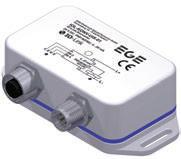
Linear Potentiometer
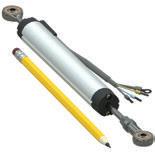
HGSI, hgsind.com
The LPPS-22 series of linear potentiometers add resistive technology to HGSI’s portfolio of linear position sensors. These sensors range in size from 1 to 12 inches and feature self-aligning swivel rod eyes on both ends, the ability to operate between temperatures -40 to 95 o C, linearity better than 0.10%, and are environmentally sealed to IEC IP-61. The 22 mm OD anodized aluminum housing with a 1m three-conductor cable keeps out dust and allows these models to withstand high shocks and vibration. LPPS-22 series potentiometers are powered with a maximum input of between 12 and 36V DC at 12 mA or less, and their maximum output resistance varies between 1 and 5 kilohms.

39 AW OCTOBER 2022 NEW PRODUCTS
Industrial Cellular Router
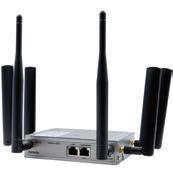
Korenix, korenix.com
The new JetWave 2512 from Korenix offers an industrial 5G gateway supporting 5G NR and 4G LTE DL speeds of up to 1 Gbps. The device also supports multi-band connectivity including LTE FDD/TDD and WCDMA. The router can be configured to use wired Ethernet or Wi-Fi as primary internet connections with failover to 4G/5G in the event of an outage. IPSec, OpenVPN, and GRE protocols can be used for connections to core networks. It also offers dual SIM standby in the event the primary SIM connection fails and supports VPN use.
Microcontrollers
NXP, nxp.com
NXP has released a new portfolio of four microcontrollers: MCX N, A, W, and L. The microcontrollers are built on a common platform and supported by NXP’s development tools and software, allowing for flexible software reuse. Based on Arm Cortex-M cores, MCX devices feature up to 4 MB of on-chip flash memory, low power cache and memory management controllers, and up to 1MB of on-chip SRAM. The portfolio also features NXP’s specialized neural processing unit (NPU) for accelerating inference at the edge, delivering up to 30x faster machine learning throughput compared to a CPU core alone. Machine learning and run-time inference are supported by NXP’s eIQ ML software development environment.
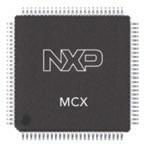
Motor Control Centers
Rockwell Automation, rockwellautomation.com
The new Centerline 2100 motor control centers, configured with a new PowerFlex 755TS variable frequency drive, provide real-time predictive analytics, automated commissioning, adaptive control, and motor control. These control centers offer power and process control in one package. Remote monitoring and control features of the Centerline 2100 motor control centers offer enhanced safety features to help protect personnel and equipment.
Industrial Ethernet Switches

Perle, perle.com
With a chassis designed to fit into any space, the new Perle IDS-710 managed industrial Ethernet switches are fanless switches with the capability to operate in temperatures from -40 to 70° C. Designed for configuration, monitoring, and management of industrial LANs, the switches feature: Profinet and Modbus TCP protocol support for monitoring and device management; Ring Protocol MRP (IEC 62439-2) for less than 10ms recovery time; STP/RSTP/MSTP for network redundancy; security and IT management including TACACS+, RADIUS, 802.1x, SSH, SNMPv3, and HTTPS; IEEE 1588 V1 and V2 PTP for microsecond accuracy; 8 x 10/100/1000Mbps RJ45 Ethernet ports; and two SFP slots supporting 1G/2.5G fiber or 10/100/1000Base-T.

40 AW OCTOBER 2022 NEW PRODUCTS
Portable Oscilloscope
Saelig, saelig.com

The Micsig STO1004 four-channel battery-powered portable oscilloscope from Saelig offers 100MHz bandwidth, 70Mpts memory, 1GSa/s sampling (single channel), 130,000wfm/s refresh rate, a 7.5Ah Li battery, and an intelligent bidirectional universal probe interface. A smartphone app is also available for remote instrument control. The new oscilloscope combines an 8-in. TFT LCD touch screen with traditional operation. Other features include a built-in HDMI output and an auto-calibration function. The STO1004 is equipped with a digital trigger system and supports serial bus triggering and decoding. It comes with a digital filter module, 256-level intensity grading and color temperature display functions. This model also has 32Gb of internal data storage and can make 31 types of automatic measurements, which can all be displayed on the screen simultaneously. It also features a bumper-protected case with a built-in prop stand.
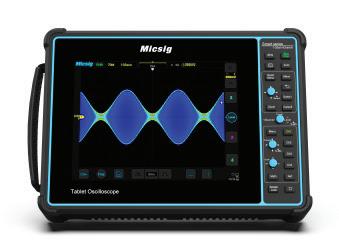
4K Video Display
Tru-Vu Monitors, tru-vumonitors.com
The new SXN-75 high-brightness, water-resistant 75-in. 4k LCD monitor features a maintenance-free (no need to clean or replace vents, fans, or filters), corrosion-resistant aluminum enclosure and is rated IP54 to withstand dripping, splashing or sprayed water, and other liquids. The SXN-75 has an operating temperature range of -22° F to 122° F (-30° C to 50° C). At two times the brightness of a standard TV monitor, the SXN-75 produces images that are visible at a distance and from wide viewing angles (178° x 178°). It also features internal speakers and a waterproof tilting wall-mount bracket. The display can be used to provide safety information, scheduling, goals, yields, production data, and other relevant information to personnel anywhere in the plant.
Miniature Circuit Breakers
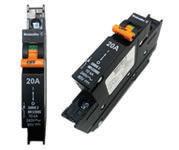
Weidmuller, weidmuller.com
Weidmuller has added the HB-series circuit breaker to its line of hydraulic magnetic circuit breakers. The HB-series features a visual operational indicator: Green/Off indicates physical contacts are open allowing work on the downstream circuit to be carried out safely; Red/On indicates the circuit is live, conforming to IEC/ EN 60947-2 for industrial isolation. The HB-series also feature finger safe terminals, which are touch safe with captive screws; a rising conductor cage clamp for retention of ferrules, solid or stranded wire; and a multi-stage arc extinguishing chamber.
Extended Reach Robot
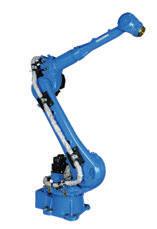
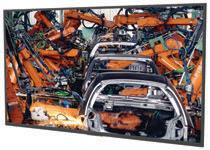
Yaskawa, motoman.com
The GP70L robot has six axes, a 2,732mm horizontal reach, 4,715mm vertical reach, 0.05mm repeatability, and a 70kg payload. With high moment of inertia ratings and acceleration capabilities, this robot can handle heavy payloads and reduce cycle times. A reduced interference design allows access to parts in tight spots and facilitates close proximity placement of robots in high-density work cells. A single cable connects the manipulator to the controller, and a cable installation tube facilitates fieldbus routing through the S-axis. The GP70L can be floor-mounted and has an IP67rated wrist and an IP54 body standard. It is controlled by the YRC1000 controller and does not require a transformer for input voltages ranging from 380V AC to 480V AC.
41 AW OCTOBER 2022 NEW PRODUCTS
Top Sustainability Trends in Manufacturing
By Dick Slansky ARC Advisory Group

Manufacturers across all industries have focused on energy saving measures for decades to decrease overhead costs and improve profit margins. Looking for ways to lower the cost of energy has been a constant component of a business model that includes operational improvement and efficiency. Today, as companies move to an overall sustainability strategy, energy conservation is just one of many parts of a working sustainability model for manufacturing.
While companies have traditionally maintained energy efficiency to cut costs and improve margins, the larger and more urgent focus on energy conservation is to reduce or eliminate the use of fossil fuels and the resulting greenhouse gas emissions to achieve a net zero effect that will mitigate further warming of the planet.
In addition to significantly reducing CO2 emissions to slow down global warming, there are other practices that contribute to a comprehensive sustainability strategy.
Factory energy management systems (FEMS). This is a method of introducing energy conservation systems into existing production systems. FEMS relates to “smart manufacturing” processes in which every step in the production process is tracked to produce the most efficient energy use. Today, manufacturers can use FEMS powered by artificial intelligence (AI) to monitor most and least optimal energy management.
Designing facilities for sustainability. This can involve several factors, including locating factories where materials and resources are nearby and improving logistics while reducing transportation. This can also include design factors like use of natural lighting and transitioning toward more efficient or “smart factories” that are designed to use less energy in production operations.
Investing in energy efficient machinery. Energy efficient machinery in factory production systems complements manufacturers that are using alternative energy sources and helps them make the move to 100% alternative energy operations.
Increasing reliance on additive manufacturing (AM). AM in conjunction with AI-driven generative design enables manufacturers to build parts that are designed specifically for AM. Parts produced with AM use less material, produce less waste, and can be faster and more cost efficient
to produce. The parts are lighter and can be fabricated from material that is often recyclable.
A shift to recyclable materials. Manufacturing with recycled materials reduces the amount of non-biodegradable materials in the environment. Companies in the food and beverage and consumers goods sector are moving toward the use of totally recycled and re-filling of all plastic containers.
Increased interest in bioplastics. Bioplastics are new eco-friendly alternatives to petroleum-based plastics. They can be made from natural resources such as corn, seaweed, sugarcane, or even shrimp shells. Most bioplastics are also biodegradable.
Contributing to a circular economy. Many manufacturers are shifting away from a “take, make, and throw away” mentality and toward a circular economy. In this economy, waste is considered a valuable resource, and companies research new and more efficient ways to extend a product’s useful life. To achieve this, they are designing products to use materials with end of life disposability and impact to the environment as key design criteria. There is also a move to a servicebased model where products are leased instead of sold, meaning they can be more easily refurbished, remanufactured, or recycled by the manufacturer when they reach end of life or break down.
Recommendations
Sustainability strategies are becoming an integral part of manufacturing companies’ business models. Not only are companies striving to be good corporate citizens, but they also understand that sustainability is good for their business, customers, and profit margins. The digital transformation that most businesses are currently involved with is also key to helping companies implement sustainability strategies and practices.
42 AW OCTOBER 2022 INDUSTRY VIEW
Not only are companies striving to be good corporate citizens, but they also understand that sustainability is good for their business, customers, and pro t margins.
IT/OT Convergence: More T�an Just Connecting Networks
 By Luigi De Bernardini
By Luigi De Bernardini
In 2016, when I wrote about IT/OT convergence as one of the key mantras in Smart Manufacturing, my opinion was that IT/OT convergence was not only a technical issue, but an organizational one. In essence, this idea of convergence is not just about connecting two networks, but creating an organization where responsibilities are unified. At the very least, IT and operations managers (CIO and COO) need to have partly common and overlapping goals and targets, which force them to work cooperatively. At the time, I noted that this convergence was not something that could happen quickly with no pain, but that it was a journey that needed to be started as soon as possible since it’s one of the founding pillars of Smart Manufacturing.

After six years, my personal view is that things have not changed much and that the journey remains a long one. Following are my current thoughts about where industry is at on this journey and what remains to be accomplished.
Mature technologies
IT and OT networks are now quite easy to connect safely, allowing data to be shared between the two worlds. Most of the new devices installed at the automation level are ready to communicate with the outside world using at least one of the widely used communication protocols. Many gateways are also available on the market to translate OTspecific communication protocols to ones the IT network can understand and vice versa. In spaces where older PLC-based or electromechanical automation technologies are still running, several tools exist to collect and transfer useful data.
Cybersecurity remains a critical attention point, and it always will be. While protection mechanisms will continuously become more sophisticated, the attack techniques will also continue to evolve and render those protection systems inadequate. We’ve learned how to live with this in the business world and accepted that there will never be 100% protection. Personal precautions, training, and processes need to be in place to ensure this, but the fact that the risk is not zero is not stopping any adoption of new technologies or systems. The same will be true in the OT world.
IT/OT relations have improved
IT is progressively more involved in OT projects, including plant digitization projects involving tech-



nologies such as MES, MOM, IIoT, and OEE. Sometimes an IT representative is just part of the working group, other times they’re part of the steering committee, and sometimes they’re leading the initiative. In many countries, incentives exist for Industry 4.0 initiatives, and one of the criteria to obtain these incentives is to connect production machines and ERP. Especially in smaller and less-organized companies, such incentives have helped make collaboration between IT and OT be viewed as having high economic value, while forcing the two departments to work together.
A common culture is still to come
If technology and organizations have improved in the last six years, I cannot say the same for the culture. What I thought was missing—common goals and common understanding of the reciprocal needs—often times remain missing. In many companies, the IT/OT relationship is still difficult and conflictual. Goals are different, language is different, methodologies are different, project approach is different, cost perception is different, and budgets are different. Sometimes IT drives and sometime OT drives, and it’s not unusual to hear one complain about the other, of the lack in understanding their real needs (typically OT vs. IT) or of the lack in understanding and considering the new technology opportunities (typically IT vs. OT). What surprises me most about this is that, in many companies, these issues still have not been effectively addressed.
As a result, system integrators are frequently required to act as marriage consultants, facilitating dialogue and helping the two parties understand each other and reach agreement on reciprocal needs. It’s not an easy role to play and it requires understanding, as well as specific competencies and skills, that are typical of both roles. It sometimes requires integrators to act more as change facilitators than as implementation engineers. This can be problematic as it requires negotiation abilities and attitudes that are not typically part of the integration engineering skillset. But it all can be fascinating, too—when it works—because it enables integrators to be the enabler of a powerful transformation that generates enormous value.
43 AW OCTOBER 2022 INTEGRATOR VIEW
Cybersecurity remains a critical attention point, and it always will be. W�ile protection mechnisms will continuously become more sophisticated, the attack techniques will also continue to evolve and render those protection systems inadequate.
CEO,
Autoware
Turbocharging Speed to Market



 By Brian R. May Accenture
By Brian R. May Accenture
Speed to market is an increasingly key priority as companies compete on their ability to sense and respond to change faster than others. Those that can increase their speed to market can gain a competitive advantage.
Amid the current macroeconomic pressures and the burdens facing the industrial sector, the C-suites of industrial enterprises (IEs) are building increased speed into their operations on a permanent basis as a means of longer-term success and, increasingly, survival.
A new report from Accenture details how new technologies are helping IEs accelerate the speed to market process.

As part of the research, which is based on a survey of 1,200 executives in the industrial sectors across 13 countries, we identified companies that had the shortest operational practices across three main pillars: ideation, planning, and delivery. Then, we analyzed which ones had leveraged advanced technologies—including machine learning/AI (artificial intelligence), cloud computing, and digital twins—to reduce time and costs.
The research found overwhelmingly that, what we call “speedsters,” are those companies that reduced time and increased efficiency the most. Importantly, they were able to do so due to a significantly higher technology leverage across all three pillars.
For example, using machine learning, speedsters achieved time savings more than seven times that of “starters”—companies that reduced time and increased efficiency the least. Those in the middle we labeled “accelerators.”
Speedsters excelled not only in timesaving, but in cutting costs too. For instance, the use of automated guided vehicles enabled speedsters to achieve cost savings 30 times greater than that of starters. Equally as important, we found that speedsters outperform both starters and accelerators in terms of financial performance. In the fiveyear period from 2016-2021, speedsters achieved 4% higher annual growth than accelerators and 18% higher than that of starters.
Improving efficiencyacross the board
What insight can industrial companies gain from our research? Clearly, if they aren’t doing so already, companies need to be thinking about harnessing and leveraging advanced technologies to ensure enhanced operational efficiency, both in terms of cutting costs and time. Our



research points to a number of ways that this can be achieved.

In the ideation stage, companies should use machine learning and analytics to analyze large amounts of data stored in the cloud to identify patterns, which accelerates the analysis of simulations and testing results. As an example, Dover Fueling Solutions developed a digital content delivery system to support video advertising at its fuel pumps. The company leveraged IoT Intelligence and a cloud platform to reduce their time to market from several years to a few months. In the process, they also increased efficiency and can now provide a better customer experience.
During the planning phase for speedsters, planning and execution processes come together. KUKA, a robot manufacturer, has been investing in enabling technologies to enable a planto-produce process. Working with two partners, KUKA recently launched a “Smart Factory as a Service” offering, which will independently and flexibly produce different product types in any quantity and fulfill clients’ changing demand for customized products, shortening time to market for new products by up to 30%.
Finally, in the delivery stage, companies should focus on integrating manufacturing with the supply chain to create a digital thread that enables the seamless flow of data across the enterprise. This enables better distribution and supply chain network optimization and planning, making it possible to gather large amounts of data in one place and allow different entities to work together to increase speed and efficiency.
The road ahead
As powerful as these technologies are, industrial companies will need to approach them in tandem with process improvements and people-related factors. It means new ways of working, such as automating manual activities, and eliminating and leveraging data to respond to change faster. Equally important, companies must focus on bringing their people through this time of change through upskilling and cultural shifts. Companies that do so can better address rapidly changing customer expectations with innovative products and experiences and, ultimately, emerge the strongest.
44 ENTERPRISE VIEW AW OCTOBER 2022
Amid the current macroeconomic pressures and burdens facing the industrial sector, the C-suites of industrial enterprises are building increased speed into their opperations on a permanent basis as a means of longerterm success and, increasingly, survival.
Automation Direct www.automationdirect.com 2
Digi-Key Corp www.digikey.com/automation 5
Doosan Robotics Inc www.doosanrobotics.com 21 Fabco-Air www.fabco-air.com 15
Hammond Manufacturing www.hammondmfg.com 13
Inductive Automation www.inductiveautomation.com Front Cover mk North America, Inc. www.mknorthamerica.com 17
Opto 22 www.opto22.com 47
PACK EXPO XPress www.PackExpo.com 7
PMMI Industry Training www.pmmi.org/industry=training 29
PMMI Media Group Custom Research pmmimediagroup.com/custom-research 9
Rockwell Automation for
MAVERICK Technologies www.mavtechglobal.com 48
Telemecanique Sensors www.tesensors.com/Safety 11
PRODUCT SELECTION AND APPLIED TECHNOLOGY HANDBOOK
ADLINK Technology www.adlinktech.com 23
ASCO LLP - Emerson www.emerson.com 16 Automation Direct www.automationdirect.com 2-3
AVEVA www.aveva.com/align-your-teams 17
Beckhoff Automation www.beckhoff.com 7 Digi-Key Corp www.digikey.com/automation 5
FAULHABER www.faulhaber.com/am3248/en 9
Festo Corporation www.festo.us 15
Mitsubishi Electric Automation, Inc. www.go.meau.com 13 Motion wwwmotion.com 19
Pepperl + Fuchs www.pepperl-fuchs.com/flx 10 Posital Fraba www.posital.com 21
Telemecanique Sensors www.tesensors.com 20
Wago Corporation www.wago.us 24 Winsted www.winsted.com 11
Automation World ® (ISSN # 15531244, USPS
is a registered
of PMMI, The Association for Packaging and Processing Technologies Automation World ® is published 12 a year by PMMI with its publishing office, PMMI Media Group, located at 401 N. Michigan Avenue, Suite 1700, Chicago, IL 60611; 312.222.1010; Fax: 312.222.1310. Periodicals postage paid at Chicago, IL, and additional mailing offices. Copyright 2022 by PMMI. All rights reserved. Materials in this publication must not be reproduced in any form without written permission of the publisher. Applications for a free subscription may be made online at AutomationWorld.com/subscribe. Paid subscription rates per year are $105 in the U.S., $147 Canada and Mexico by surface mail; $250 Europe, South America. $325 Far East and Australia by air mail. To subscribe or manage your subscription to Automation World, visit AutomationWorld.com/subscribe. Free digital edition available to qualified individuals outside the United States. POSTMASTER; Send address changes to Automation World®, 401 N. Michigan Avenue, Suite 1700, Chicago, IL 60611. PRINTED IN USA by Quad Graphics. The opinions expressed in articles are those of the authors and not necessarily those of PMMI. Comments, questions and letters to the editor are welcome and can be sent to: editors@ automationworld.com. We make a portion of our mailing list available to reputable firms. If you would prefer that we don’t include your name, please write us at the Chicago, IL address. Volume 20, Number 10.
COMPANY WEBSITE PAGE
22435)
trademark
45 AW OCTOBER 2022 ADVERTISER INDEX
Another common mistake made when considering enclosures is putting too much focus on the lowest cost as opposed to total cost of ownership. End users often do not spend enough time thinking about the technology involved in the cabinet design and what it is housing.
Beth Stackpole on the importance of enclosure selection.
Aveva’s Enterprise Asset Management (EAM) system automates maintenance planning and tracking activities on CF Industries’ nearly 50,000 asset entities, including vessels, pumps, rotating equipment, and electrical motors. As a result, CF Industries reports a potential revenue improvement of up to 5% using Aveva’s EAM technology, as well as a reduction in operating costs of up to 10%.
Jeanne Schweder on CF Industries’ use of Aveva’s EAM software to streamline operations.
















In just a few years, Tasteful Selections has grown from 100 workers to close to 900. With this growth, the use of robotic palletizers have made a di erence in employee accidents and injuries. Previously, workers stacked 50-lb. boxes onto pallets up to 92 in. high, but now the robotic palletizers perform that task.
Aaron Hand on how Tasteful Selections is incorporating robots into its operations.
During the company’s investigation of new software systems for its test labs, engineers and management changed their way of thinking about the kind of software they needed. They realized that if they thought about their testing operations as manufacturing operations—rather than a separate function—they could use the Plex Smart Manufacturing Platform the company already used to manage its wheel and wheel-end manufacturing and distribution operations.
David Greenfield on the extension of MES software into Accuride’s test labs.












Anheuser-Busch is willing to give machine builders more remote access, even though doing so is a challenge due to IT team security risk restrictions. The move toward giving OEMs remote access to equipment is something the company, together with technology partners, must figure out how to do safely as business continues to grow.
Stephanie Neil on Anheuser-Busch’s focus on packaging line cost and quality issues.

46 KEY INSIGHTS AW OCTOBER 2022

























































































































































































































































































 By David Greenfield Editor-in-Chief, Director of Content
By David Greenfield Editor-in-Chief, Director of Content




















































































































